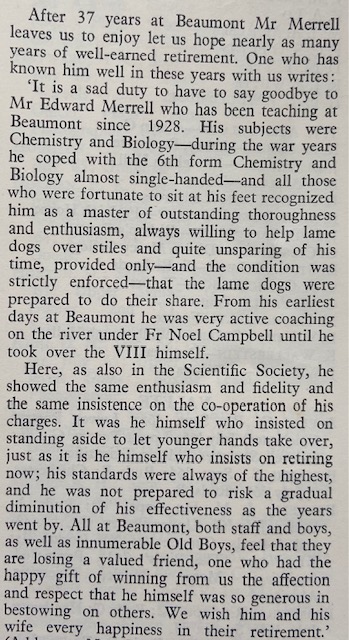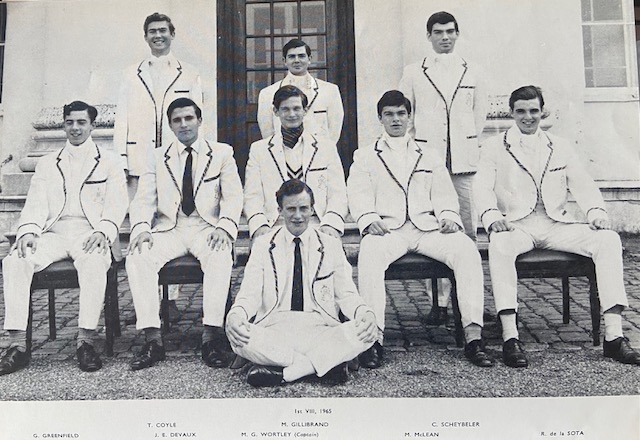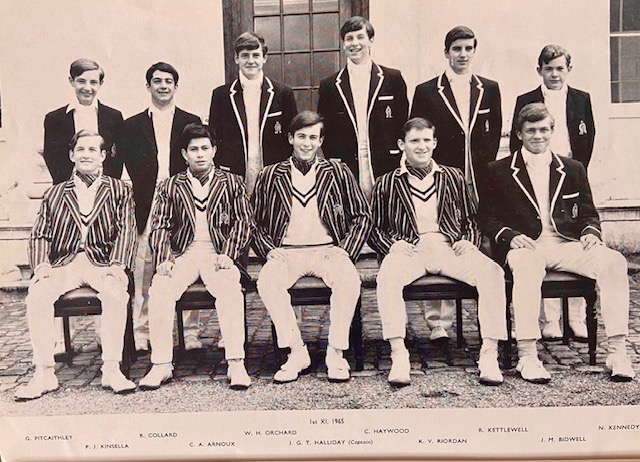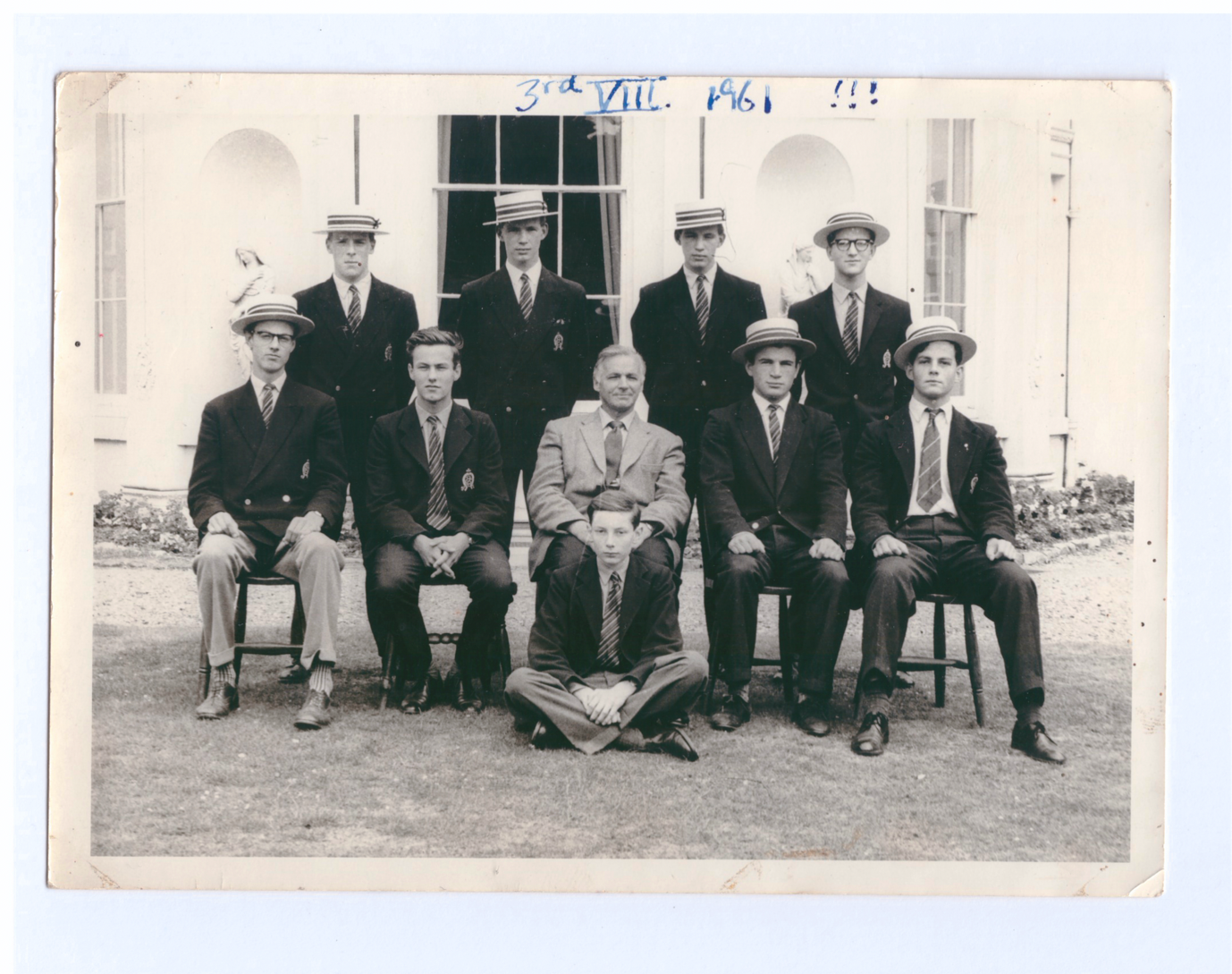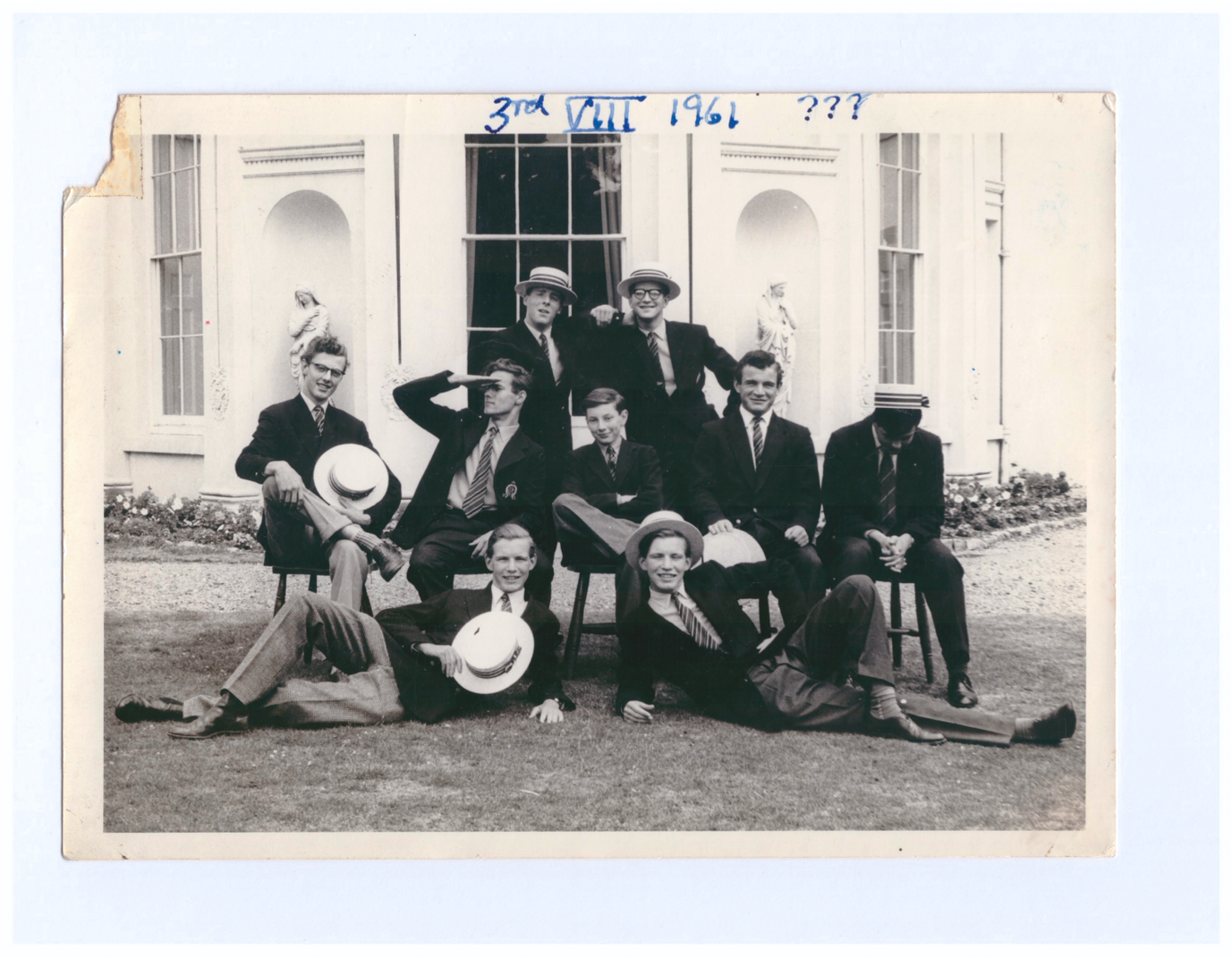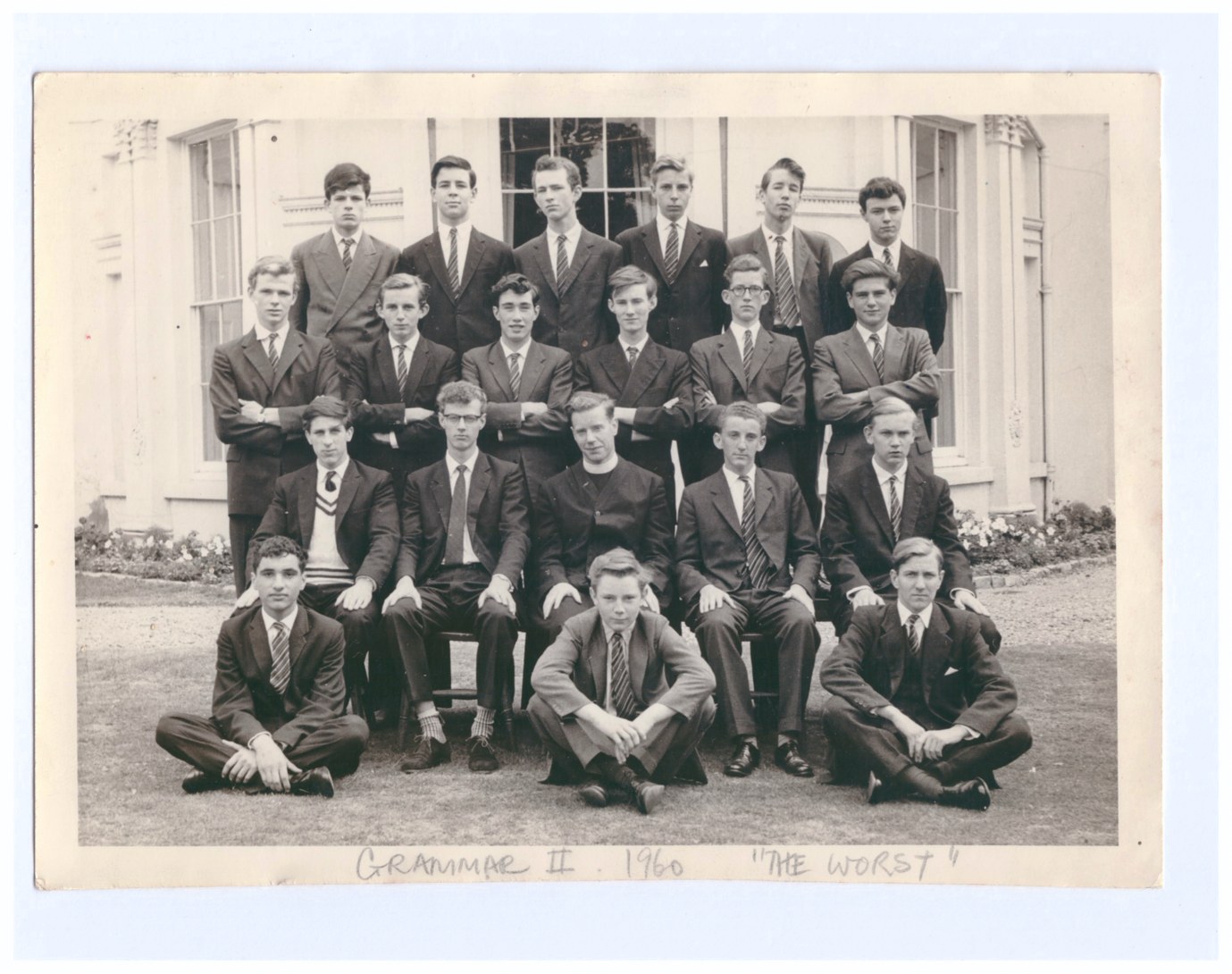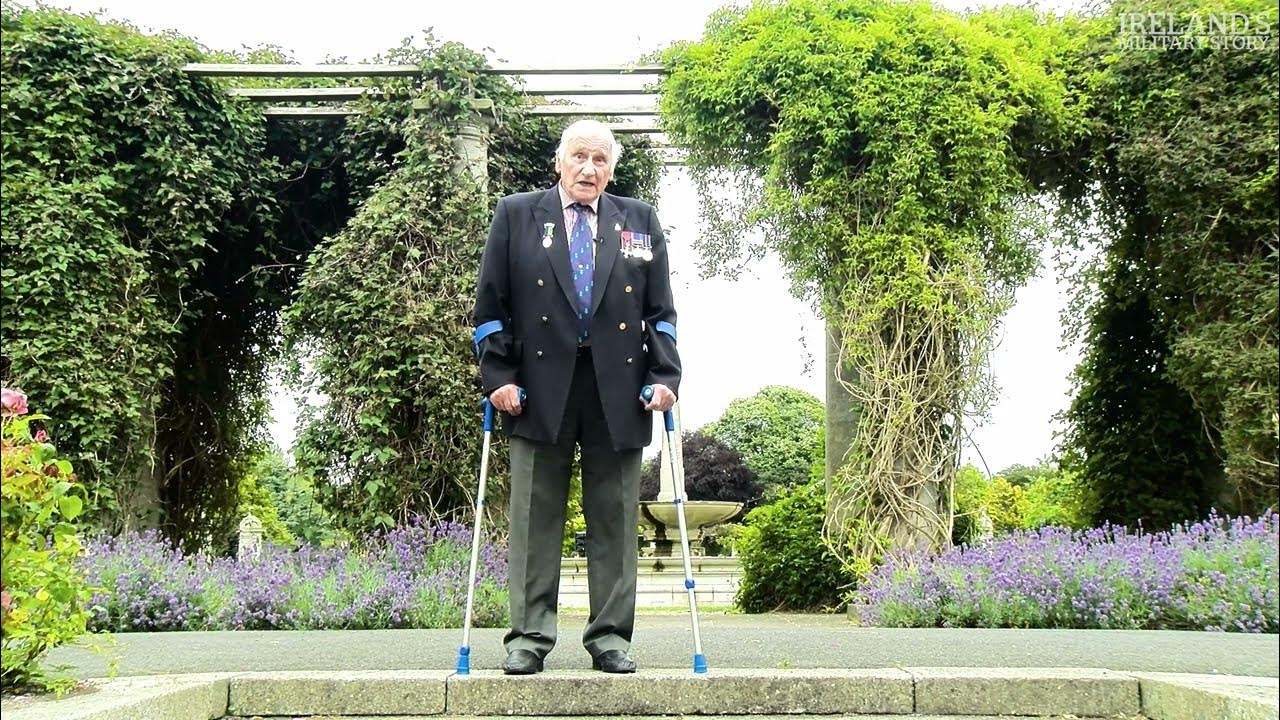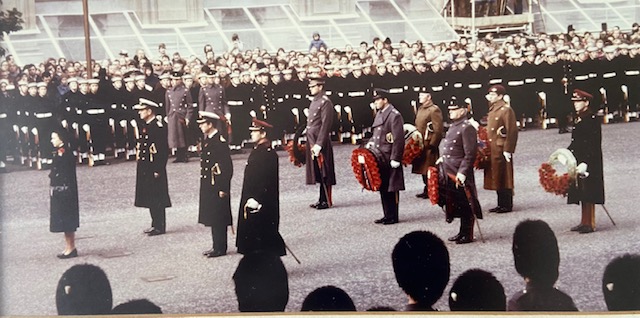A M D G

BEAUMONT UNION REVIEW
SUMMER 2025
 Sixty years since we heard
that Beaumont was to close. The Rector at the time Fr Dunphy went to a
BU Committee Meeting to inform them and was received in stunned
silence, before anger and disbelief erupted and he was asked politely
to leave forthwith. They were people most of whom he had known as
friends for years: no more, even though he was merely the 'messenger
boy' on behalf of the Society. All of us have recollections of how and
when we heard, whether it was the letters through the post to parents
or like the Senior Scouts half way up a mountain at Kandersteg. For
myself, it was opening The Times in the Officers Mess in Germany to
let out a few well-known expletives. In the October Beaumont Review
there was no mention of the closure, except for Fr Alastair Russell's
heartfelt "The Spirit of Beaumont" in which he wrote "If Beaumont were
just a piece of one's past it wouldn't matter so much. It is because
it is so much a part of one's present that it hurts so much. One thing
I am clear on is that something rather wonderful is being made to
die." Most of us can look back to those days and think we were
lucky, very lucky for the learning, the friends and for the men we
became.
Sixty years since we heard
that Beaumont was to close. The Rector at the time Fr Dunphy went to a
BU Committee Meeting to inform them and was received in stunned
silence, before anger and disbelief erupted and he was asked politely
to leave forthwith. They were people most of whom he had known as
friends for years: no more, even though he was merely the 'messenger
boy' on behalf of the Society. All of us have recollections of how and
when we heard, whether it was the letters through the post to parents
or like the Senior Scouts half way up a mountain at Kandersteg. For
myself, it was opening The Times in the Officers Mess in Germany to
let out a few well-known expletives. In the October Beaumont Review
there was no mention of the closure, except for Fr Alastair Russell's
heartfelt "The Spirit of Beaumont" in which he wrote "If Beaumont were
just a piece of one's past it wouldn't matter so much. It is because
it is so much a part of one's present that it hurts so much. One thing
I am clear on is that something rather wonderful is being made to
die." Most of us can look back to those days and think we were
lucky, very lucky for the learning, the friends and for the men we
became.
NEXT YEAR MARKS THE 150th ANNIVERSARY OF THE FOUNDING OF THE
BEAUMONT UNION; NOW THAT IS SOMETHING WE WILL HAVE TO CELEBRATE.
NOTICES
THE LUNCH
The LUNCH will take place at the Caledonian Club, Halkin Street, Monday 6th October. The Bar will open at Noon, Lunch at 1pm. Dress: Suits. The Committee looks forward to seeing you all again. You may of course bring your sons and other male guests whose misfortune was not to have attended Beaumont.
This year's Chairman is Romain De Cock (65)
REMEMBER.
BACS payment preferred to Sort: 30-99-09. Beaumont Union A/c 02198243 with NAME as reference. The cost is 95. ( an increase on last year charged by The Club for food, wines and the service charge) )
There is no charge for members of the Clergy.
Cheques to The Hon Secretary at the address below. Alternatively, if
you have paid electronically you must email to: amanda@mbarrington.net
Mrs A Bedford
94 Hurst Park Road
TWYFORD
Berkshire
RG10 0EY
Tel: 0118 934 2110
(Ed:
I already have one 'taker'
Ed Monaghan (62) is
crossing the Atlantic to be with us. You will find more about Ed's
activities further on in the REVIEW)
OBITUARIES
I must inform you of the following Deaths:
Anthony de Kerdrel (59)
son of Vicomte John de Kerdrel (35) at his
home at Woodbridge, Suffolk on May 23rd. Anthony had two
younger brothers at the school. His career was in the luxury yacht
trade. He provided Michael Branson
with Virgin Atlantic Challenger II which broke the record for the
fastest trans-Atlantic crossing by a surface vessel in 1986.
Martin Noble Wells ( 55)
son of Thomas Wells MP QC, Barrister, Labour Politician, and firm
'European'. To Trinity College Cambridge. He married Mary daughter of
Old Gregorian Sir Joseph Maloney Bt. QC. A regular supporter of the BU
and member of the Golf Society. Also enjoyed hunting and sailing.
Three sons and a daughter.
His son Jonathan wrote:
"I know that Beaumont was an important aspect of his life. I
well knew his OB tie, and he regularly attended your events. Sadly, I
do not imagine he ever appreciated your rather good website on which I
found a photo of him lunching with old friends (Summer 24). He had a
quiet pride in his old school which I slightly envied. I think there
must have been there an excellent culture of learning sport and
camaraderie from which he benefitted. immensely through his
life."
William Henry (52).
In his 91st year. William was famed for the BU lunches he
organised at Tandridge Golf Club, he also
came regularly to Lourdes with the BOFS.
BOOK REVIEW
"REFLECTIONS" The
latest
from David Fettes, having
lost ' Nicola, the love of his life to cancer'. I found it heart
rendering but with that touch of humour as he looks back on life.
Strongly recommended. Available at Waterstones, W H Smith and Amazon.
"A deeply heartfelt reflection on grief, loss and ageing that will be of great comfort to anyone experiencing those emotions and stage of life. The poetry is clear, direct and sometimes devastatingly sincere."

Life is a journey where we gather experiences, discover the depths of
love, and ultimately face the searing pain of parting - whether
through death, overwhelming grief, or the surreal void left by those
we've lost. The absence of a spouse, a partner, a child, once so
present, now gone, creates a chasm we struggle to comprehend.
The poems in this collection reflect the author's observations on
the human condition, capturing the profound joy of love and the deep
ache of loss that inevitably follows. While deeply personal, these
poems are meant to resonate universally with anyone who has lived,
loved, and grieved. They offer a mirror to life's highs and lows,
holding moments of humour, joy, and sorrow, and ultimately honouring
a life well lived.
THEATRE

News from Francis:-
"My new play Make England Great Again is set in the near future, just after the Britons First Party
wins its first ever general election victory and its charismatic
leader Max Moore enters 10 Downing Street.
It's a comedy, but also a warning.
Make England Great Again will be at Upstairs at the
Gatehouse in Highgate Village
for two weeks in
October September
30 to 5 October and 14-19 October."
VE DAY 80 Years Ago


The above was published in the July 1945 REVIEW edition. The next was April 1946 and I can find no reference to VJ Day. I appreciate that this was on the 15th August in the middle of the Summer Holidays but one cannot help feel that "They really were the Forgotten Army".
B U Night in LOURDES

"Warming up for The Carmen"

John Flood organised "The Brother Michael & Pat Hall Memorial Walk" to raise awareness for the Canonisation of Brother Michael, the founder of HCPT.Beside himself he was joined by fellow OBs John Wolff and Jonny Coleman.
John writes
28 walkers made the walk from Alfriston East Sussex to the Long Man
of Wilmington, albeit the Treasurer's Group mistakenly used
part of the slightly longer return route for the initial section
of the walk, allowing the Secretary's Group to get just in front of
them where the route merged with the intended one. After
crossing the Street, the walk became steeper and the Chairman's
Group, notwithstanding including the eldest walkers, could be seen
still leading the way in the far distance. The fact that they were
heading for the top of a hill that they didn't need to fully climb,
too far to the south of the path that passes the top of the Long
Man of Wilmington, wasn't immediately apparent, so the
Secretary's and the Treasurer's Groups followed suit.
Nonetheless the elusive 'Long Man' was found a couple of
hundred yards lower down a steep bank to the left and everyone got to
the spot where one gets a rather inadequate sideways view of the Long
Man from above.

Given the extra time taken in a reconnoitre down a very steep and
difficult descent, we omitted the extra short loop to
the bridleway to the south and instead took the shorter
route to join the South Downs Way which then provided a
straightforward route downhill to the
Cuckmere river and hence back to Alfriston
by soon after. 4pm. Better than forecast, the sun had shone throughout
and there was a great breeze to keep one comfortable.
Mass was celebrated in the Anglican St Andrew's Church, by Pat Hall's
son, Fr Simon.
This was followed by the buffet supper at Wingrove House in
Alfriston after we had successfully rearranged their dining room
tables for more companionable conversation. The food was good and a
plea for the small side plates to be replaced by a man's size dinner
plate was successful, enabling a worthwhile helping to be
accommodated, and in some cases, repeated by the hungry walkers.
After note:-

"Wolffs in Southdown sheep's clothing- after their exertions."
John commented:-
"On the very steep grass bit near the summit I had stopped for a
breather in the force 6 wind. I have to admit that I was praying that
I didn't do a Mallory. (The famous climber who didn't make it down
Everest.)"
Ed; But there is every reason to think he made it to the top!
(Both John and Mallory).
Beaumont Union Golf Society... and a mini-Phoenix
Nigel Courtney Writes:
OBs may recall that at the BU lunch in 2017 some golfing enthusiasts
offered to resurrect the Beaumont Union Golf Society - which was
founded long ago but had been moribund for many years. In no time
25 OBs rallied round to play and/or support. In response, Robert
Wilkinson, Mark Marshall, and Nigel Courtney agreed to take care of
proceedings as non-playing captain, vice captain, and Hon Sec
respectively. And this resulted in a 97th year of Beaumont
golf.

Although Beaumont's place in the famous Halford Hewitt competition
was no longer available the freshly-restored Beaumont Union Golf
Society - ie the BUGS) went on to regularly field 12 or more intrepid
players to compete for a new trophy - the Mike Bedford Claret Jug - at
Westerham Golf Club. Teams also took on the Old Gregorians (and
enjoyed splendid lunches at Denham Golf Club) and sparred with Old
Boys of St. Johns-Beaumont for the storied Desmond Tolhurst Cup.
Runners-up and other deserving combatants often found themselves
awarded golf balls embossed with the Beaumont crest.
In 2024 the 104th year of Beaumont golfing coincided with
the 57th anniversary of Beaumont's closure. This meant, of
course, that most of our members were in their 9th decade
and coping with the associated slings and arrows. The remaining
players had to acknowledge that formal events could not continue and
the decision to close was sealed with glasses of Chateau Beaumont.
However, a mini-Phoenix has emerged as augured in Robert's Spring
Review. Some BUGS have invited each other for an informal 2-ball
joust at their home clubs: for example: Chris Tailby at Effingham;
Rupert Lescher at Royal Wimbledon; Mark Addison at Littlestone. And
these three stalwarts joined Nigel Courtney to make up and enter a
4-ball team rejoicing in the nom de guerre of "Beaumont BUGS" at
the charity day of the Westerham Veterans Captain on 19th
June.

On the big day there were 28 teams. After a bacon roll and coffee
(and a rapid catch-up regarding aches and pains) we noted that our
team's combined age was 320 years whereas that of most of the other
teams was nearer to 240 years! However, the golf handicap system
ensures fair play and [spoiler alert] although we did not win, we were
not last!
We set off from the 1st tee in good spirits and enjoyed an excellent day's golf despite the 32 degree heat and the need for plenty of liquid refreshment and a good lunch. As things turned out our team managed to collect no fewer than five prizes including a 25 voucher, a bottle of Irish Whisky and some golf balls for beating the club professional in a special competition on the 11th hole. All in all, a memorable day.
It will be great if we can keep our mini-Phoenix going for
while. All OBs who are members of a golf
club and have a current golf handicap will be most welcome to meet for
an informal game. Just say the word.
Nigel Courtney
nigel@courtneynet.com - 07802 895756
ED: It could be said that all good things refuse to die
De Lisle 'Gathering'
(En France)
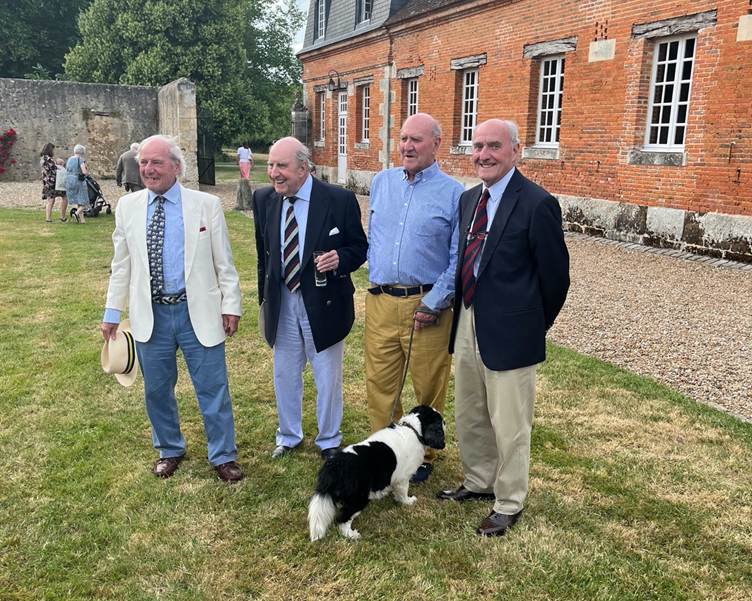
Bertie de Lisle's 80th
Edwin, Gerard, Bertie, Hubert
UKRAINE
Bertie and son Ed made it there and back at the beginning of May. It was pleasing that over half the funds to buy the much needed medical supplies were raised by members of the BU.
THANK YOU ON BERTIE'S BEHALF.
GONGS.
We are probably 'passed it' for receiving awards whether they be New
Year or King's Birthday but you never know,
so I give the list a perusal when published.
This June I note the Award of an MBE to Captain Richard Sheehan The Royal Scots Dragoon Guards.
Richard ( St John's and Eton) is the son
of
Richard (64)
and I sent a congratulatory message and that I expected a bottle of
Pol Roger was on ice ( preferred champagne
for the RSDG): a bit late -It had already been enjoyed.
Richard's award was for his work with the newly created UK Space Command. A possible "Dan Dare" for the future?
ONE FOR THE LUNCH
I heard from
Ed Monaghan (62) who has
every intention of making it to The lunch.
So COME ANMD JOIN HIM
Chronicling a Love Affair with Canadian Theatre
My name is Kelly Monaghan. Herewith, a few words about this site. I'm
a retired travel writer and publisher with an abiding interest in
theatre, especially repertory theatre. Despite the frequent use of the
word "Rep" in the names of many American theatre companies,
repertory theatre is an endangered species in the United States and
virtually extinct in my little corner of the world Connecticut, where
tradition is a way of life.
But the repertory ideal is alive and well in Ontario, Canada, home to
the Stratford and Shaw Festivals. Perhaps because of the ways in which
these two august institutions develop and nurture young talent,
Ontario is also blessed with amazing actors, most of whom, bless their
hearts, have resisted the lure of the obscene wealth and tawdry fame
they see across their southern border.
In 2009, thanks to a Canadian friend's recommendation that I check
out a TV show called Slings and Arrows, I belatedly discovered
the Stratford Festival. One-week stays turned into two weeks, turned
into a month, turned into three months. Now my wife and I spend as
much time as we can in Stratford. We gradually expanded our horizons
beyond Stratford and now see much of what southwestern Ontario has to
offer during the warmer months.
This site will document my continuing love affair with the richness
of Canadian theatre and serve as a sort of aide memoire as,
inevitably, the ephemeral experience of live theatre fades in my
memory. I pay for all my tickets. In fact my wife and I are members of
and contributors to most of the theatre companies this site reviews.
You are welcome to follow @ontariostage on Twitter, where I will tweet out notices of new reviews as they are posted.
Another option is to click on the RSS logo on the home page, which
will send notices of all new posts to your favourite feed reader or news aggregator.
It needs no ghost come from the grave to tell you that these reviews
represent my own opinion and that your mileage may differ. I write as
a theatre lover, not as a professional critic. The members of that
estimable confraternity strive to surf the latest wave of the
zeitgeist and write for posterity rather than the average punter
wondering what to spend their hard-earned loonie on next weekend. That, too, is just
my opinion and a jaundiced one at that. Since I have comfortably
exceeded the three score and ten allotted by the Psalmist, my views
may seem antediluvian to some. So be it.
Like Caesar's Gaul, the site is divided into three hopefully
self-explanatory parts - Ontario, Elsewhere (because I see plays wherever
and whenever I can), and Blog (where I will comment on whatever).
https://ontariostage.com/about/
HENLEY.
I heard from both John Flood and Paul Podesta as to who was to be
seen and heard along the river bank.
John reports:
Together with
Robert Bruce
and Mike Wortley we again took
our 5 sons to Henley. It was the very hot
day and jackets were not required in
Stewards. The racing was good as was the iced coffee. I saw no other
OB there beyond our party which is I think a first. I have since
heard from
Charlie Poels that he saw
me from the stand but by the time he had extricated himself, I had
disappeared. He also saw
Paul Podesta one of the
days.
On Friday Mike and I joined
Patrick Burgess's party
which included
Mandy Bedford, Richard & MaryLu Sheehan, Nigel & Catherine
Courtney, Bertie & Catherine de Lisle and Roddy Clayton's widow
Diana Corbett.
Photo of Beaumont beating Monkton Combe in1925
Ed. The Princess Elizabeth this year was won by Shiplake beating St
Paul's. I don't think Shiplake rowed or even existed in our day!
Watching the replays, one is amazed at the standard of rowing in the
schools today and the coaching staff are by necessity full time
professionals.
The Princess Elizabeth
LUNCH VENUE
I heard from both
Charlie Poels and
Gerry Ford that
consideration be given to the LUNCH being moved to Beaumont in the
spring. This is a 'hardy annual'.
My response to them was as follows: -
"A subject often discussed! The question has always been, when
do OBs go on
Hols in
the Spring or the Autumn: the answer is probably both! October has
been the date since time immemorial even though it is close to
Remembrance Sunday. While we remain a "Gentlemen only"
event, London has always suited better rather than Beaumont with
getting there and the drink/drive problem. (some of us may also be
banned) .If it was the overall wish for
wives, girlfriends, careers etc to attend then it could change.
Currently the wish is for us to remain a male preserve. The Garden
Party was a huge success and in many
ways it would be fun to give it another go.
I think at this stage, I will 'sound out
others thinking
of Fr Bamber we should not get 'bogged' down and with increasing age
we may need to adapt.
You may think that is a "Bugger off" reply but I will put
something in the next REVIEW and see if there is a further
response."
Anyone wishing to put in their 'pennyworth'?
THE MOUNT TO CLOSE
What Irony! 60 years after we closed, news comes of the closure,
with immediate effect, of The Mount.
From the Chairman of the Governors of
Mount St Mary's College
It is with profound sadness and a heavy heart that I write to inform
you of the immediate closure of Mount St Mary's College and
Barlborough Hall School with effect from
today, 30th July 2025. This decision has not been made lightly, and we
understand the shock and distress this news will undoubtedly bring to
our entire school community.
Mount St Mary's College and
Barlborough Hall have been cornerstones of
our community for nearly 200 years, providing a nurturing and
faith-filled environment for generations of children. Since 2004, when
the schools became an independent charitable trust governed by a
dedicated board of trustees, we have sought to uphold the values of
Jesuit education and provide an environment in which young people can
grow, reflect, and flourish.
From 2015 onwards, the schools have faced increasing financial
pressures, in line with the wider challenges affecting the independent
education sector in the UK, including the addition of VAT on school
fees and the removal of business rates relief for independent schools.
Despite the extraordinary efforts of staff, parents, and supporters,
the schools have been unable to reach a sustainable financial
position.
Throughout this time, we have been supported by the Jesuits in
Britain, to whom we are very grateful. In addition to gifting the
school land, buildings, and investments when the trust was
established, they have provided over 3 million in loans on generous
terms to help sustain the schools through difficult years. These
included deferred repayments, restructured agreements, and the release
of property to enable
sales all
intended to help us achieve long-term viability.
Since early 2025, governors and senior leadership have worked
tirelessly to prevent the closure of the schools, seeking an
alternative future to ensure continuity for pupils and staff. They
engaged in complex negotiations to explore different financial models
and to find a new owner who would respect the schools' ethos and build
on their achievements. Initially, several educational organisations
expressed interest, and one potential partner remained in detailed
negotiations until the last few days.
However, despite these efforts, no viable option emerged. As of the
end of July, the level of debt and lack of a realistic path to
financial viability mean we have no alternative but to proceed into
Administration. We know this will be met with sadness, disappointment,
and even anger by those who love these schools. We share that sorrow
and are committed to being as open and supportive as possible in the
weeks ahead. The Administrators have assured us that all options
available for the future will be considered.
Our priority now, as we process this news, is the wellbeing of our
pupils, their families, and our staff. There will be immediate
challenges as the schools enter formal insolvency procedures, during
which the appointed professionals will manage the next steps.
Regrettably, all ongoing activities, including the Holiday Club, will
end with immediate effect.
We recognise how sudden this news is, and we deeply regret the
immense disruption and uncertainty it will cause for your families
and, most importantly, for our pupils. The Board of Governors is
committed to supporting everyone affected through this difficult path,
and further practical information will be shared as soon as possible
in the coming days and weeks.
We extend our deepest gratitude to our teachers and staff for their
unwavering commitment, tireless work, and profound love for our
pupils. Their impact on the lives of countless young people will be an
enduring legacy.
We also want to thank each and every one
of you, our parents, for entrusting us with the education and
spiritual formation of your children. Your partnership and support
over the years have been invaluable.
To our pupils, the beating heart of these schools, please know how
proud we are of you. You have brought energy, joy, and life to the
Mount and Barlborough. Our thoughts and
care are with each and every one of you at
this time of shock and sadness.
This is a truly heartbreaking moment for all of us. We ask for your
patience and understanding as we enter the Administration process, and
the exploration of all options available. Our prayers are with all our
pupils, families, and staff during this incredibly difficult time.
ARTICLES
DUNHILL more than just 'Baccy'
A distinguished Colonel of my Regiment The Earl of Cardigan who
commanded The light Brigade at Balaclava said to the Paymaster "That
is not a profession, that is a trade'. Certainly, in the past it might
have been deemed rather vulgar but times have changed and as in all
things some are more vulgar than others. I think it could be
justifiably said that of all the Catholic Schools Beaumont
and those associated with her have produced the most famous tradesmen,
not for Beaumont JCB Diggers (Ampleforth) however useful they might be
no it was luxury, refinement, quality that was the hall mark. Charles
Roskell the first boy was the son of one of the most famous watchmaker
and silversmiths of his day when he worked with John Hunt. From there
the list goes on Champagne from Charles Heidsieck and Ayala, Wine from
Murrieta, Sherry from Gonzales and Osborne, whiskey from Tullamore,
Dewar and Buchanan, Cognac from Hennessy and Guillet, Couture from
Chanel and Molyneux, Scent from Dyptique, Art from Knoedler, Leather
from Connolly and sports cars from Frazer-Nash and Bentley not
forgetting Swords from Wilkinson (Latham): to mention a few.
Anything missing? Finest tobacco and its accessories which brings me
to the company of Alfred Dunhill. Richard Dunhill was at St
John's and Beaumont 1936 42 and his younger brother John
through the War from 1940-45.
So, what is the story of the company and the OB who would become its
Chairman.
Richard as Master of the Worshipful Company Tobacco Pipe Makers
The following extracts are taken from various articles and interviews
over the years:-
The Dunhill empire began in 1907 when Alfred Dunhill opened his
tobacconist shop on the same site in Duke Street where the office and
shop stand today. Richard Dunhill believed that his most valuable
trait was adaptability. It was his grandfather's strength too. An
entrepreneur and inventor, Alfred started work in his father's
saddlery business. Smelling a whiff of petrol in the winds of change,
his father turned to producing motor car accessories such as big
mittens foot warmers and special hats. The Dunhill talent for
inventing ingenious gadgets soon manifested itself with Alfred
wind-resistant pipe whose tiny windshield stopped the tobacco from
becoming an inferno as drivers tore along the roads in their cars. The
success of this invention prompted him to open his own business,
specializing in smoker's requisites.
Alfred's first customers were apparently spoilt young fops with
silver-topped canes and amber cigarette holders who revelled in the
indulgence of having their personal blends mixed by the owner,
recorded in his special book, and kept in a private humidor. Dunhill's
famous cedar-panelled Humidor Room, filled with the Havana cigars that
connoisseurs dream about, is still located at the back of the Duke
Street shop.
Besides demonstrating a flair for creating a mystique around a
commonplace activity, Alfred was determined to succeed by providing
his customers with the best of everything and his philosophy that his
merchandise must be useful, dependable, beautiful and the best of its
kind, has remained Dunhill's guiding principle to this day
Alfred retired from the business in the 1920s and ran off with his
mistress and the position of managing director and President went to
his brother Herbert who was a financial wizard and ran the company
from Monte-Carlo. Alfred's son Vernon who had joined him in the
business died young in 1938: he was the father of Richard and John.
On leaving Beaumont, Richard did war service in the Army before
joining the firm in 1948
and went to work "at the absolute bottom," sweeping floors
and unpacking parcels: He never had any doubts about someday being
the boss. "I wouldn't have stayed otherwise," he
declares. , Richard Dunhill delights
in having spent his entire working life in the service of the same
company. He has never wanted to do anything else. "Ever since I
was at school, I assumed that if I behaved
myself I would become a director. That
has always been my ambition." "Starting at the bottom
taught me a great deal about the company. Besides, all I knew when I
started was how to stick bayonets into people and how to signal in
morse code! I certainly wasn't spoilt. I learnt a lot about pipes
and lighters working in the repair division! In the wholesale order
department, they gave me a car, which otherwise I couldn't
afford."
Although Dunhill became a public company in 1923, Richard is the
third generation Dunhill to be its chairman. "It is desirable for
the head of the company to be identified with its products," he
says. "The tradition which my grandfather started has been
maintained because the family was more conscious of his standards than
other would have been. This gives continuity to the company and
confidence to the customers."
His Aunt Mary who preceded him as Chairman was a grandmother figure
who occasionally smoked a pipe. An astute businesswoman who expanded
and diversified the company's operations, she was so dynamic that on
the day she died, at the age of 81, she was out inspecting new
merchandise!.
If Richard Dunhill didn't exist, his company would probably invent
him. No casting agency could have selected a man so perfectly
tailored for his role as Chairman of the Board. With his
aristocratic head of silver hair, sculptured grey beard and urbane
manner, he looks like an elder statesman; he epitomizes the
qualities which his firm represents, and to which its customers
devoutly aspire: elegance, refinement and
class.
Mr. Dunhill bears a striking resemblance to his grandfather Alfred
who founded the firm, even to the pipe he puffs. While we talk in his
London office, the tobacco which he mixes for himself from 16 exotic
blends perfumes the stately room with a sweet yet masculine aroma that
suggest after-dinner port taken in the library. Such is his air of
understatement that even his solid gold
laticed watchband seems to peer discreetly
from inside the immaculately stitched sleeve of his classic grey suit.
The man whom staff called "Mr. Richard" has an avuncular
twinkle in his eye but wisps of gentle
mockey curl about the office along with
the smoke . Richard Dunhill's style
displays nothing so blatant as charisma, and his well-bred distance
owes more to reticence than remoteness. Finesse restrains him from
claiming any personal credit for the company's achievements. He
recoils visibly when confronted with personal questions and ascribes
the firm's success to team effort.
Richard Dunhill's identity is so tightly interwoven with the firm
that when asked about his own personal goals, he quips, "Well,
they can't promote me any further! As Chairman I've reached the end of
the line, but what drives me now is the challenge of ensuring that
this company continues to make profits and superbly crafted
products."
Besides demonstrating a flair for creating a mystique around a
commonplace activity, Alfred was determined to succeed by providing
his customers with the best of everything and his philosophy that his
merchandise must be useful, dependable, beautiful and the best of its
kind, has remained Dunhill's guiding principle to this day.
Imaginatively designed, superbly crafted products, sometimes with a
whimsical touch, have always been Dunhill's trademarks, but over the
decades their ingenuity has been tested by the eccentric requests of
some of their illustrious patrons.
The list of Dunhill's patrons reads like a who's who, not just of
English aristocracy but all the royalty of Europe as well as the
shakers, movers and entertainers of the world. Winston Churchill made
some of his most vital decisions while smoking Dunhill cigars, as did
John F. Kennedy.
Frank Sinatra, Henry Kissinger, Sammy Davis Jr. and Anwar
Sadat
were other discerning customers Over the years clients browsing in the
House of Dunhill rubbed shoulders with Anna Pavlova, Somerset Maugham,
Rudolph Valentino, the Marx Brothers. Before the War they held Royal
warrants from Edward Prince of Wales and King George VI. In 1963 the
firm received the ultimate stamp of approval in the Royal Appointment
to the Queen.
Alfred Dunhill's inventive smoking accessories have become
collectors' items. His most spectacular success was the
"Unique" lighter in 1924. For the first time smokers had a
reliable lighter whose horizontal flywheel mechanism made it spark
every time, and which they could hold and operate in one hand. Luxury
variants of the Unique lighter followed, one with a built-in watch. A
sports model for open cars featured a windscreen around the flame. In
1930 a "Vanity" version for women incorporated a powder puff
and lipstick. Always ahead of competitors, Dunhill went on to produce
giant table lighters and pocket lighters, perfecting the mechanism
with the roller technique and improving the fuel by introducing butane
gas.( Ed; my wife Annie cannot be the only
OB spouse to have cherished her Dunhill lighter)
The man who buys a Dunhill product is also purchasing a distinctive
image: gold standard masculinity coupled with an understated English
elegance. Alfred Dunhill laid the foundation of this gentlemanly
pipedream in the gracious days of Empire; today descendants continue
to pander to the same nostalgic ideals with equal success. The Dunhill
label seeks to confer membership to an exclusive club of English
gentlemen who value quality above flair, tradition above trend. Unlike
self-indulgent French bon vivants, or
lusty Italians who pursue la Dolce Vita, the quintessential Dunhill
gentleman reveres restraint, moderation, classical styles and subtle
colours.
If you enter the Alfred Dunhill shop in London's West End, the
liveried doorman will usher you into the elegant showroom. Points of
light from the chandeliers danced on the intricately patterned parquet
floor, on which lay an antique Persian rug. Arranged against
wood-panelled walls and in glass-topped display cases was a selection
of Dunhill merchandise: wallets, lighters, belts, ties umbrellas,
pyjamas, shirts, suits, raincoats, travelling bags, sunglasses,
toiletries, watches, pens and cufflinks.
Raising the question of price with the Chairman of Dunhill is a
little like discussing the issue of privilege with the Queen: you know
ahead what the reply will be, but you are not prepared to press your
argument. "We place quality above everything, regardless of the
time and effort involved, and many people are prepared to pay for our
quality. We select the finest fabrics, and have our merchandise made
by consummate craftsmen wherever we find them.
So our lambswool is made in Scotland, pens
in Germany, watches in Switzerland, fashions in Italy, and pipes here
in England."
Alfred Dunhill once said that no gentleman is truly well-dressed
without the subtle note of a fine masculine fragrance. He introduced
fragrance into the range in 1936, but this aspect of Dunhill's
merchandise was not successful until the new Editions fragrance and grooming range was launched in 1985.
Its distinctive sensual perfume of wild herbs and exotic spices
results from a subtle blending of Italian lemon, petitgrain and
Alpine lavender nils, with clary sage,
basil and Asian galbanum, cedar and sandalwood.
At the far end of the shop are the smokers' requisites, their
unobtrusive location an indication of this division's reduced role
among Dunhill's enterprises. Twelve years ago, smokers' products
accounted for almost 100% of the firm's sales: today they represent
only 8%.
In 1981, Dunhill sold its tobacco business to Rothman's
International, who continue to produce Dunhill brand cigarettes
under licence. Rothman's is the major shareholder in Dunhill with a
50.6% holding. Like an empire built on slavery in its early years,
Dunhill today plays down its association with tobacco. "We're a
bit embarrassed about it," said Mr Dunhill, thoughtfully
puffing on his pipe.
Behind the counter in the Dunhill showroom, an assistant weighs out
50 grams of rich Atlanta tobacco for a customer. Its deliciously
intense aroma makes one's head swim. The wall is decorated with
pipes, some as glossy as newly opened chestnuts, others
knobbled with a shell finish. Each has
the distinctive Dunhill mark, a white dot.
"Our pipes go through 90 processes before they are ready, and
the mouthpiece is hand cut, not moulded," Richard Dunhill
explains. "Our expert at the factory rejects 98% of all the
pipes during some stage of their production because he finds cracks,
splits or holes. It's true that you can buy a pipe for 25 pounds
while ours cost from 70 pounds to one hundred and fifty pounds, but
ours are perfect."
During the last ten years, under Richard Dunhill's direction, men's
clothing has been introduced. "It has required a dramatic
change of thinking for us to produce two new collections each year
after producing merchandise that never dated," he said. Apart
from their classic blazers and flannel slacks this summer customers
will also be able to select clothes from Dunhill's
current Varsity Collection, with its nostalgic evocation of languid college
days.
"Our biggest change recently has been the introduction of
strongly colour coordinated clothes," said Mr Dunhill. The
Varsity collection even Co-ordinates belt and umbrellas! Richard
Dunhill is amazed by the success of their menswear division. "It
has certainly been one of our greatest triumphs, that after only 12
years we have become the largest supplier of luxury ties in the world!
The success of Dunhill's enterprise in Japan is probably unequalled
by any other British company. Dunhill has 30 boutiques in Japanese
department stores, each one an oasis of understated indulgence. Japan
now accounts for one third of all its business.
Perhaps the biggest surprise in recent years has been Dunhill's
acquisition of the French women's fashion and fragrance house, Chloe,
which will continue under its own brand name. Dunhill have negotiated
ready-to-wear licences for Chloe and Miss Chloe in Japan.
"Our basic strategy will continue to be the creation of a major
international enterprise by acquisition and by internal growth,"
said Mr. Dunhill. "We expand further into fashion and custom-made
tailoring, footwear, and we'll acquire more brand names. We have 700
million pounds available in cash. Who knows - we may get into sports
services, perhaps even entertainment. The sky's the limit."
During Richard's tenure they also sponsored the Queen's Cup High Goal
Polo tournament at Guards.
DUNKIRK 85 years on
This year marked the 85th anniversary of DUNKIRK
15 years ago to coincide with the 60th
anniversary of the withdrawal of the BEF in the Spring of 1940 and
their extraordinary rescue, Dan Snow produced a documentary entitled
Dunkirk for the BBC. Much of the material concerning the army
experience was drawn from the War diary kept by
Captain John Drummond of the 2nd Bn of The Royal Ulster
Rifles. John Drummond left Beaumont in 1928.
John was born 1910 the youngest son of Henry Drummond of the banking
family and the Hon Lilian Russell younger daughter of the 1st
Lord Russell of Killowen. He was brought up at the family home at
Henley and sent to Ladycross before coming
to Beaumont in 1922. He played
cricket in the First XI and was Captain of the School in 1927 -8. He
gained a place at Sandhurst and was commissioned into the Royal Ulster
Rifles. He saw service in Egypt and Hong Kong between 1932 to1940 and
was promoted Captain in 1939 and appointed Adjutant of the 2nd Bn,
Royal Ulster Rifles: the following is taken from his diaries.
On 1st September 1939, 2nd Battalion Royal Ulster Rifles received
orders to mobilise. Over the next 3 days, 208 reservists from Co.
Armagh joined the unit at Parkhurst Barracks, Isle of Wight.
During the next 6 months, they became part of 9th Infantry Brigade,
3rd Infantry Division. There, as part of the British Expeditionary
Force, they came under the command of Major General Bernard
Montgomery. On 3rd September 1939, Britain declared war on Germany and
2nd Battalion Royal Ulster Rifles departed Parkhurst.
They next arrived at a concentration area to partake in divisional
exercises at near Maiden-Newton, Dorset. Training and drills took
place until 3rd October 1939, when the unit boarded a train at
Sherborne, Dorset. From there, they journeyed to Southampton,
Hampshire and 717 men boarded a vessel for France. 'Mona's Queen' was
an old, cramped Isle of Man steamer. Riflemen overcrowded the decks
and there was no provision for a hot meal on the cold, wet, and rough
journey to Cherbourg. Seasickness amongst the men was common.
On arriving in Cherbourg, the Battalion boarded another train and
travelled through the night. On disembarking at Sill -le-Guillaume,
the unit then faced a 5 mile march to their
billets at Parennes. Within a few days,
the Battalion once again embarked on a
cross country train. The destination was
Templemars, which they reached on 12th
October 1939. Again, the unit would remain here for only
a number of days. On 14th October 1939,
they departed for Lezennes near Lille.
This would be their home until 10th May 1940.
They would remain in the old medieval village until the German attack
of 10th May 1940. Beneath the village lay a maze of ancient
underground passages and near the village stood a medieval fort, now a
green mound. On the top of this fill stood 2nd Battalion's regimental
flag and the site acquired the name Ulster Fort. The name Ulster,
however, could not be used when speaking to war correspondents. This
is the extent of wartime security even in 1939.
Their job Lezennes was to dig. The entire
Battalion would dig into the east of the village in anticipation of a
German attack. Digging was a formidable and unpleasant job in the cold
and wet weather of the winter of 1939 but as Major General Bernard
Montgomery was to say
It's alright then the Rifles are there.
Eight months into the "Phoney War", on 10th May, Germany
invaded the Low Countries. The British Expeditionary Force invoked
Plan D leaving the defences behind and advancing into Belgium. 3rd
Infantry Division took up position on the River Dyle. 2nd Battalion
Royal Ulster Rifles deployed to the city of Louvain. They covered a
wide front of around 2,200 yards, manning approaches to the
city.
On the way to Louvain, the Battalion heard many rumours and false
reports. One such report stated the enemy was using chlorine gas and
so most of the Battalion arrived in the town wearing respirators. The
smell hanging in the air, in fact came from an electric battery
factory destroyed by Luftwaffe bombing.
The Rifles dug in, laid mines, and waited. The first sight of the
enemy was a motorcycle unit. The Rifles took it out with a burst of
fire from a Bren Gun. The first Royal Ulster Rifles shots of
the War had been fired. By nightfall, the Battalion engaged all
along the railway line of Louvain. They fought like experienced
veterans for five days holding the town in the face of artillery and
mortar fire.
During the evening of 14th May 1940, the Belgian unit interspersed
within the Rifles' ranks dispersed. Under particularly heavy
mortar-fire, orders came down the line for the Belgians' withdrawal.
At 2100hrs, they got on their bicycles and disappeared into the night.
Reports suggest the Rifles accepted this move "quite
calmly".
At 0530hrs, the Rifles opened a Battalion Headquarters at Louvain
Town Hall. Soon after, the German Army penetrated the line at the
railway station but a counterattack from the Rifles restored the
situation.
The morning of 16th May 1940 began with order restored in the
Battalion's area. There had been some fighting overnight and the
Rifles held the Railway Station entrance, the subways, and one
platform.
Less than 25 yards away, the enemy held the opposite platform. They
also held an embankment overlooking the station as well as the houses
along its top. From behind the cover of railway cars at the station,
German snipers and machine gunners operated. Gunfire and grenades
smashed the glass roof of the railway station and tore down the
boulevard.
During the day, German troops entered the station yard after blasting
with heavy artillery fire. A counterattack from the Rifles with
grenades and Bren Gun repelled the enemy and they made no further
efforts at this point.
Discussions had taken place outside of the Royal Ulster Rifles'
knowing. The British Expeditionary Force in other areas was under
great threat and soon the Rifles would receive orders to withdraw to
Brussels. That evening, the Battalion would
march 21 miles along paved roads to a spot
a few miles outside of the Belgian capital.
The withdrawal was quiet and uneventful with only an occasional shell
burst sounding over the city. Many of the Riflemen were sad to leave
Louvain. They felt their 5 days there had been a
success and their local knowledge would
help hold the city for longer. They had also become something of
locals themselves, helping evacuees and locals.
At 0600hrs on 17th May, 2nd Battalion
Royal Ulster Rifles arrived in the Belgian capital. Despite the
sleepless nights and long marches, the Battalion. The troops rested
for 2-3 hours awaiting the arrival of more troops on vehicles. From
Brussels, 2nd Battalion marched on a further 9 miles to the town of
Leeuwergem. Roads jammed with infantrymen,
civilian refugees, and military vehicles slowed down progress. The
Battalion established their position shortly after 1830hrs.
On the morning of 18th May, the enemy carried out some shelling of
the Battalion's position causing some casualties. The Rifles also
fought off some enemy motorcycles and light tanks, though compared to
the fighting in Louvain, it was less pressing. Again, news from the
other BEF fronts was not good and the following day would see the
Battalion withdraw once again.
At 0800hrs on 19th May, the Battalion was to withdraw some 33 miles
in broad daylight. This time, there were no troop-carrying lorries.
The Rifles destroyed more non-essential items and made use of
commandeered civilian vehicles to aid in the retreat.
By noon, much of the Battalion was in
Tieghem, 6 miles from
Oudenaarde. There, they enjoyed a short
rest and several mugs of tea with the hope that a quiet night of sleep
might follow. It soon became clear that 2nd Battalion Royal Ulster
Rifles was the first line of defence and by 1830hrs, soldiers were dug
in along the Courtrai-Bossuyt Canal. They held ground there for the
next 3 days and enjoyed some of the advantages of a countryside not
yet ravaged by the enemy. There were cream,
eggs, butter, and even champagne to be had if one knew where to ask.
The Battalion diaries suggest an Officer even had a shave using some
hot gin.
The Battalion made it to Tourcoing near the border between France and
Belgium. On 24th May 1940, German High Command gave an inexplicable
"halt" order. Panzer Divisions stopped for 2-3 days in
places while their forces replenished. This gave the Allied soldiers
some respite and a chance to dig in stronger points of resistance. The
order in the British Expeditionary Force was:
Fight to the last man, and the last round.
The Battalion enjoyed a 5-day rest, catching up on sleep, checking
supplies, and tending to personnel. By this stage of the retreat, it
was accepted that men would help themselves to milk and eggs from
farms, and other stock from abandoned NAAFI stores.
The battle for France was all but over. Still around 50 miles from
the sea, many were predicting re-embarkation and hoping for a journey
home.
The peace and tranquility at Tourcoing
could not last. At 1900hrs on 27th May
The Rifles would be going into uncertain
territory armed with Bren Guns and Anti-Tank Rifles. The enemy was
once again on the move and the fighting retreat continued and by the
end of the night, the Battalion had moved 18 miles to the banks of the
Yser Canal at
Boezinge.
As day broke on 28th May , the Battalion
dug in at Boezinghe. Throughout the
morning, they came under mortar fire and sustained casualties among
the forward Platoons.That evening, the
entire Battalion withdrew once more to
Woesten, 4 miles to the west. By this
stage, the Battalion had run out of maps. At the beginning of the
campaign, they had a truckload of them but
no one had predicted the hasty 95-mile retreat.
As early as 0430hrs on 29th May they were under fire at
Woesten. This began one of the worst days
of the campaign for the Battalion. Their position on a forward slope
offered little cover. Despite digging decent slit trenches, the
Battalion sustained a number of casualties.
The Battalion Headquarters also took a direct hit causing even more
casualties.
Orders came early in the day for a further withdrawal to
Bulscamp that evening. The plan was to
move after dark. The afternoon saw the Battalion destroy blankets,
packs, valises, greatcoats, and groundsheets. This would free up space
in the available transport. They also burned documents, clothing, and
extra kit. By nightfall, the Battalion was ready to move.
German troops used the failing light to attempt more infiltrations of
the Allied line. A concerted attack came at 2030hrs, leaving forward
Platoons almost in hand-to-hand combat until their scheduled fallback
time. The Anti-Tank platoon lost their 2
guns and many troops became prisoners.
Those who escaped began the 12-mile march north-west to
Bulscamp. Troops and vehicles of almost
every Division of the Expeditionary Force wound up the main
Ypres-Furnes Road. The main force crossed the
Yser Canal well within the range of enemy
guns. On arrival at Bulscamp, soldiers
found the main bridge destroyed. A pontoon bridge replacement also
burned. Heavy shelling fell around the area and in the chaos, the
Battalion located a minor road where another smaller bridge crossed
the canal 3 miles further west. It took 6 hours to cover the 12 miles.
At 1000hrs on 30th May, the Battalion began to dig in again although
found much of the area flooded. At a farmstead with a view over the
surrounding area, the Battalion established their Headquarters. As
well as the Officers of the Rifles, the farm was home to several
refugees who had sought shelter in the basement.
When Quartermaster Lieutenant Henniker arrived at Headquarters, he
brought no rations. By this stage, the Rifles had its own teams of cow
milkers, fowl catchers, and pig butchers. In the farmhouse, Major
Benson lay down on a comfortable feather bed to enjoy a quick smoke,
awaking several minutes later to find it on fire. Apart from this
accidental drama and some light shelling, it was a quiet day for the
Battalion.
All your countrymen have been following with pride and admiration
the courageous resistance of the BEF during continuous fighting of
the last fortnight. Faced by circumstances outside their control,
under a position of extreme difficulty, they are displaying a
gallantry that has never been surpassed in the annals of the British
Army. The hearts of every one of us at home are with you and your
magnificent troops in this hour of peril.
Message from King George VI read to 2nd Battalion Royal Ulster
Rifles.
Early on 31st May 1940, a Brigade conference took place to organise
the final withdrawal to Dunkirk. The plan was for the Brigade to
embark that night and return to the United Kingdom. Occasional
shelling interrupted the conference, which lasted several hours.
Commanding Officers attempted to lay out as much detail as possible.
3rd Division and 4th Division were to board ships during the night of
31st May 1940, although no one knew what shipping was available.
Reception camps at La Panne were set up where soldiers from each
Battalion would reconnoitre. Guides would lead them into Dunkirk in
groups of 200. Division control staff would take over and direct
soldiers to temporary piers and onto waiting vessels. The Battalion
was only to carry Bren Guns, Anti-Tank Rifles, Rifles, and 100 rounds
of ammunition. Orders came to destroy everything else including
transport and communications equipment. Once completed, the Battalion
would hold position until 0230hrs on 1st June. Embarkation would take
place at La Panne until 0400hrs and at Bray-Dunes afterward.
Throughout the day, enemy activity increased, the pounding of shells,
and the rattle of machine guns grew ever closer.
At 0230hrs on 1st June 1940, 7th Field Regiment of the Royal
Artillery, still supporting 2nd Battalion Royal Ulster Rifles fired
their final shell. Bridges to La Panne remained intact although under
heavy mortar and shell fire. The town itself
burned and confusion and chaos reigned.
Control Staff who had been regulating movement had gone and the
Battalion failed to find their reception point. Captain Drummond
decided the town was unsafe and as one, the Battalion made for the
beaches.
By this stage of the Battle, both C Company and D Company were down
to 50 soldiers per Company. They rearmed with abandoned Anti-Tank
Rifles and Bren Guns and fought onwards.
The rest of C Company and D Company made it to Dunkirk early on 1st
June. The future General Bredin
fell exhausted on an Isle of Man Steamer.
He convinced the Captain to overfill the
vessel to ensure all his Company got on board. To his surprise, he
found a steward onboard in white uniform serving the soldiers. The
steward asked if he could bring the commander anything. Bredin asked,
in hope, if he could have a beer. The steward informed him that ship
policy dictated alcohol could only be served when more than 3 miles
out.
That convinced him that we would win the war!
At sunrise on 1st June, the remaining troops of 2nd Battalion Royal
Ulster Rifles set off for Dunkirk. The 11-mile march through soft sand
halted frequently as
Messerschmitts strafed and bombed the
coastline. German planes crossed the skies every few minutes. Allied
planes arrived around once an hour. The Battalion waited for a time at
Bray-Dunes where they hoped ships might come into a makeshift pier. A
thick cloud of black smoke hung over Dunkirk as the Rifles approached
marching as one.
At 1100hrs, the leading soldiers of the Battalion boarded a Destroyer
at the Dunkirk Mole. While boarding, the Destroyer pulled away to
assist with an SOS call from the sinking SS Scotia. With only a short
wait on the Dunkirk Mole, the rest of 2nd Battalion Royal Ulster
Rifles boarded another Destroyer. Their crossing of the English
Channel was quick and uneventful. With members of the Battalion
crossing on ships small and large, they reassembled at Somerset a week
later. There, they took stock. Initial reports indicated a total of 34
soldiers killed, 70 injured, and a further 70 taken prisoner of war.
In total, more than 340,000 soldiers of the British Expeditionary
Force returned from Dunkirk.
Victor Alexander Christian Henry George de Mauny (Source: christies.com)
With War coming, Victor was recalled as a Naval reservist and was
posted to HMS Fervent the
shore establishment based at Ramsgate in the old "Merrie
England" amusement arcade. Once it became evident that the BEF
would have to be withdrawn from Belgium and France, preparations
(Operation Dynamo) were put in place and Victor was given command of
HMS Ocean Breeze a
112 ton Drifter used as a contraband
control vessel. His "salty bosun" George still wore his
privateer's gold earrings below his steel helmet as they set out on
their first run on the 30th May.
HMS Ocean Breeze
Ocean Breeze
ferried 259 men off the Bray sand dunes north of the town on two trips
across the Channel. Victor also commanded the motor launch
Haig bringing out a further
60 men. Next he took the Dutch
Skoot
Pascholl over:
Skoots were Dutch motor coasters, flat
bottomed and ideal for the beach evacuation. De
Mauny was able to bring back a further 695
men, 300 of which were on the final journey on 4th June.
The Dutch Skoot
Pascholl
For these actions, he was mentioned in dispatches (The London Gazette of Friday, August 16, 1940). The recommendation states:
"Between Noon on 30 May and 0815 Hours
on 4 June 1940, Lieutenant De
Mauny was continuously engaged under way
on evacuation duties without any intermission. He commanded
in succession Ocean Breeze, Haig and then as Navigator of a group of Skoots, commanding the Pascholl. He brought
back more than 300 troops from Dunkirk beach in surf conditions on
two separate occasions and was notably more successful than other
small craft working in the same areas. On 31 May, when he was
eight hours off the coast, his ship was subjected to continuous air
attack. He displayed great devotion to duty under fire, and
marked initiative, and was favourably reported upon by his Senior Officers on more than one
occasion."
In October 1940 Victor was promoted to Lt-Commander and posted to the
destroyer HMS Brighton.
This ship was originally the USS Cowell built in 1918 and was part of
the lend-lease scheme of 1940. She joined the 1st
Minesweeper Squadron in the North Atlantic approaches and was also
involved in convoy duties. In August 1941 he was given command of the
Saltburn, a mine sweeping
sloop but they were not deployed and were attached to the Navigation
School at Portsmouth. It was not until 1943 that he went on operations
again, in command of
HMS Mallard built in 1936
as a patrol vessel with a 4inch main armament eight other subsidiary
guns, depth charges and a top speed of 20knots. She had a crew of
sixty and was part of the Corvette Flotilla deployed in the North Sea
on escorting Coastal Convoys. For his services in
Mallard including enemy
action Victor was awarded the DSC. He finished his service in command
of the destroyer
HMS Impulsive with the rank
of Commander.
GISS - GOSS
GISS GOSS
is THE REVIEW gossip column with tittle-tattle gleaned from various
sources.
De Kerdrel
"Memories"
Boxing '59
The UNBEATEN team that claimed the 'scalps' of Merchant Taylors,
Dulwich, Army Apprentices Arborfield, Wellington and the Gordon Boys.
Ant Stevens:-
I was dismayed to receive the news about Anthony de K. Although we
haven't been in touch for years, we were good friends and several
times I went to stay with him in Aldeburgh,
We'd go duck shooting (and the occasional
coypu) and a bit of sailing. More often we'd be the Cross Keys,
challenging American visitors to darts and winning many a pint off
them. Then there were the golden years of Beaumont boxing. I can't
remember ever losing a match under the tutelage of Johnny (Corpse)
Johnson and Major Roddy. (Did you know that he was nicknamed 'Corpse'
in my father's day because he was so
skeletally thin back then.)
Is Euan Cameron still
around? I haven't seen him for a while either, but he was also a
compadr .
Sadly, I will not be able to make Anthony's
funeral annoyed
because I was up in Woodbridge only two weeks ago.
Gerry Ford:-
Anthony, Yes Euan is
still with us -though very frail, in fact it was Euan that told me
about Anthony, his wife' `Jane shared a flat many years ago with
Bobby. We live in Suffolk so I too am
guilty that I never called on him. Years ago, when we ran our first
restaurant and were very ignorant about food we went to supper in
Woodbridge. He gave us fresh crab and a very rare bit of beef, neither
of which I had experienced! When he opened the door of a very
small terraced house his remark was "
don't come in too fast or you will be out the back! " He made a
great success of running Whistocks boat
yard in Woodbridge selling expensive yachts.
Ant I am sure you remember us beating hell out of each other
after rowing. I think Sass broke it up one day. "I think that is
enough".
Yes
happy days in the boxing team - Anthony was our captain in my last
year. A part of us dies.
Ant Stevens again:-
Hi Gerry,
Good to hear from you. Yet again, we don't catch up except once in a
blue moon. Did everyone remember Anthony arrived at St Johns with the
surname Halsey? That was because his father was in the French
resistance and only reverted back to his
real name when it was safe to do so.
Maybe with age, I have got it wrong, but I think it was Anthony as
secretary who decided to challenge Bryanston to a match (the idea
arose because he was keen on a girl whose brother was there). Maybe
Beaumont's reputation had travelled too far, but they declined to pick
up the gauntlet.
Memories,
memories I
trust you are still coasting along like me.
P.S. No, I don't remember the fight. I hope I didn't hurt you too
much.
ED:-
Anthony was a yacht builder and broker based at Lowestoft firstly
with Brooke and then Edmiston.
When MD of Brooke he built Atlantic Challenger 11 for Richard Branson
that broke the record for the fastest trans-Atlantic crossing by a
surface vessel in 1986.
Anthony on the left with
Branson and a model of the proposed craft
Originally commissioned in 1984 by Branson as a record-breaking
transatlantic superboat, Designed by Soni
Levy, built from aluminium and equipped with a pair of 2,000hp MTU V12
turbo-diesel engines, this 72-foot brute of a boat cost a cool 1.5
million. It went on to complete the crossing from America to the UK in
a time of just 80 hours and 31 minutes, taking a massive two hours off
the previous mark. In the event, it was denied official recognition
because of a couple of technicalities, but it was still an
extraordinary achievement.
Next snippet was when Anthony was at Edmiston.
"Edmiston drops Lady Christina's price by a whopping 12.5
million'
12 February
2009 Written
by Malcolm MacLean
news of a price cut that's more than some large
secondhand yacht cost in total.
Anthony de Kerdrel in the
London office of Edmiston & Company announces that the price of
Oceanco's 62m Lady Christina has
been reduced by 12.5 million to 52.5 million. Built in 2005, she
offers lots of deck space as well as a comfortable, luxurious
interior. The accommodation consists of a spacious master suite
forward of the upper deck, with superb views through a semi-circle of
windows, plus four guest cabins on the lower
deck all
ensuite.
She had been owned by Monaco
based businessman Lord Irvine Laidlaw also into classic cars and
philanthropy.
Anthony's father who was in the French Army in 1940 was able to get
to England at Dunkirk. He was commissioned into the Lancashire
Fusiliers before joining SOE and dropped into Southern France as agent
'Lutine: He was awarded an MC.
His brother Michael was also with the French Army but in Alsace and
was not so lucky. However, through his mother's contacts with the
Resistance he was able to escape to England by fishing vessel and
submarine. He joined the RAF but was killed when his chute failed to
open when his plane was hit over Holland in December 1944.
Their Mother:-
Edwina HALSEY DE KERDREL joined the organized Resistance
through Boris Vild in July/August 1940.
The Eulogy given by his Friend Peter Halkin
Anthony and I were close friends in London in the 1960s, but for the
last 40 years or so - although we have seen each other spasmodically -
I have very little knowledge of the various directions his life has
taken, and I do not feel confident in talking to it.
Forgive me too for referring to these notes; in such a labyrinth of a
life it's easy to get lost.
So here we go back to the 60s on our stroll down Amnesia Lane: try as
I may to remember the first time I met Anthony - I think it must have
been through Euan - I
cannot be more specific than some time in 1963 (yes, famously between
the lady Chatterley's ban and The Beatles first LP) but I do remember
vividly when I first saw Anthony and Bobby - and doesn't that sound
right! There are some names that seem welded together in our
imagination; they were dancing at a party, not the fashionable twist
or jive of the time but a bizarre cross between an 18th century
Gavotte and a Morris Dance to 'I Want to Hold Your Hand' - rather
prophetic as it turned out. I immediately thought them impossibly
glamorous and unconventional and desperately wanted to be their
friend.
Well, I got lucky: some weeks later I
moved into 11 Ifield Rd (where in those days smart Chelsea
stopped and rather less fashionable Fulham
started) with Anthony and another Beaumont boy called
John Green. At that time
Anthony was employed by the north British rubber company as a junior
executive. I remember the grey flannel suit and the odd socks - a
career path which we all felt was both amusing and more than a little
inappropriate in, well, so many ways!
In fact, shortly afterwards he gave his notice in as I moved in he
moved on. Though the two events were, I hasten to add, not linked, it
was just the first of many reinventions of himself; again I can't
remember the exact chronology of his next move, but I do recall that
we both found ourselves working temporarily at Selfridges, he on the
cooked meats department I on the tobacco counter, and our friend
Michael Scott Moncrieff on
the biscuit counter. We all shared a floor manager called
Mr Rook ('Rookie') and we all loathed him;
he was cross, haughty and angry and he particularly took against
anyone whom he considered posh. He detested me too by the way, so it
was not an exclusive prejudice. One day a customer asked my
advice about two boxes of cigars: 'What's
the difference?' he demanded. Of course I had no idea, but I had a
stab: 'I think it's just that one looks a little more opulent than the
other', I offered. He bought the more opulent box and left. As he did
so Mr Rook,
spitting pins, pressed his inflamed face up against mine and said 'why
do people like you use such posh words? Who do you think you are?',
and he grabbed me by the collar. I pushed him instinctively away and
miraculously he slipped and fell. At that point I dashed to the
elevator and ran up to the top floor to get my P-45. On the way out I
passed through the cooked meats department there was Anthony with his
cook's hat on. 'I've hit Rookie!' I
lied . 'Good for you!', he said. 'I've
given my notice in and I'm off!'. 'Hang on', he said, 'just hang on a
moment'. I thought he was going to admonish me for my too-hasty
reaction (after all, the rent was due). Ripping his hat off he came
from behind the counter; 'I'm coming with you. I'm fed up with this
place!'. And we spent the afternoon in the pub, and that was the end
of that. I think we even managed to pay the rent.
Thereafter it gets a little hazy again, but magically he re-emerges
out of the mist, his hair is longer and he's sporting Zapata
moustache. He has bell-bottomed trousers, and I believe
a yellow frilly shirt. Glory be!
he has become hip, and the manager of
Signals - London's - if not the world's - most avant-garde art
gallery. Well, frankly, he would be wouldn't he. As James Irvine
observes laconically, he was never docile; far from it, he was
more and more ebullient. This is really the
cutting edge of Swinging London - light shows, bubble machines,
vibrating optical spectacles, shimmering reconstructed rainbows, and
Anthony is the master of ceremonies. There are slightly self-conscious
conversational references to Mick and Marianne and John and Paul too.
It is also brilliantly seductive, and I am of course deeply
envious.
The end of Signals came abruptly in 1966. However, it was all a
psychedelic dream after all, but such fun.
At this point I am pounding dully away on a typewriter in Canterbury,
writing thrilling copy for the Thanet School of Motoring, when the
phone rang one morning; it is Anthony: 'Why
don't you just come back to town. Forget all that advertising
nonsense', he said, 'Let's start our own transport business carrying
works of contemporary art to the continent'. And so began what we
pretentiously called 'Wheels
International', with - it
has to be admitted - a little help from our
friends. We bought a 5 tonne Ford
high-sided van, and Anthony took out a lease on a Mews property in
Notting Hill. Our aim was to service the
rapidly-growing gallery scene in London and
link it with Europe, and - rather surprisingly - it worked like a
treat. In the first year we went to Paris fourteen
times Venice three times, Berlin twice, and
many other destinations between. If not rolling in it, we were doing
pretty well financially. A friend of
ours' mother in Paris was heard to say of
our enterprise: 'L'argent coulait
comme l'eau',
and indeed it did for a time. One night in Paris we went to the
much-vaunted Tour d' Argent for dinner; it was superb, and Anthony was
in his element. He ordered, I remember, a bottle of 1950 St Emilion,
his favourite. I had never tasted such
nectar. The bill I remember came to the equivalent of 50 - an
unheard of extravagance for 1966.
in order - let us say - to simplify transactions, we listed the
contents of the van as 'architectural models'. Tariffs having to be
paid on works of art, we knew they were so wacky that no customs
official would question that description. Coming back through Harwich
early one morning, however, just such an official asked us to break
the seal and took a look at the contents of
the van. We were pretty relaxed about it
all at this point, when he grunted: 'Architectural models, you say?
Funny that, because they remind me of the work of Takis Vasilakis the
Greek kinetic sculptor'. We had discovered the only customs official
in the UK with a degree in contemporary art, and it hurt - it hurt the
bank balance worse than our pride, I fear!
Equally bizarrely, one day on
our return to London we dropped off some architectural models at
Indica gallery. It was owned and run by our friend and sometime
partner John Dunbar.
'Why don't you come back later tonight?', he asked. 'We are having a
HAPPENING'. Intrigued, we did return that night, and were ushered into
a dark basement, where about 30 people were sitting around a small
round platform stage. A spotlight was focused on a sack bag filled
with what looked like watermelons, which hung from a hook from the he
ceiling. The audience was mainly composed
of young fashionably attired members of the counterculture. It was
pretty dark, but in the second row was a
chap in a white linen suit and rimless spectacles; a middle-aged man
called Tony Cox distributed about 6 pairs of scissors amongst the
spectators and invited them to take it in turns to make a cut in the
bag. After some time and snipping, the integrity of the bag was
weakened, and out fell a small Japanese woman whose naked body was
painted black. She stepped forward, bowed to the spectators, and
simply said: 'Yes'. To be honest, most people were stupefied by this,
but the chap in the white linen suit laughed. I think you all know the
outcome of this story - the woman's name was Yoko.
the man's name was John, and - as history
has proved - it certainly happened
for them.
Unfortunately, the van caught fire in Provence shortly after this.
The business collapsed, and that was the end of that one.
But nil desperandum Anthony had another idea - he would start his own
gallery in Mayfair, with a charming but not altogether trustworthy
partner called Robert Self. I think I only went there once, but I
remember there was a huge optimism and the usual buoyancy. James
recalls going to lunch with him and a number of what he calls
'hangers-on'. Anthony typically picked up the bill for the lot of
them. Unfortunately, the gallery closed shortly afterwards - no fault
of his own, but perhaps it may have been
wise to inquire more into the credentials
off his partner
But EXCELSIOR
once more onwards and upwards
- a lucky break introduced him to the world of ocean-going yachts
-what else? Finally, he had found his vocation, and with ultimately an
elaborate office off Piccadilly he set
about yacht brokerage. It turned out (wouldn't it just?), that he had
a considerable talent for salesmanship. I remember his telling me that
one morning by the harbour in Cannes that
he was having coffee, when a family -all in identical shell suits and
speaking broad Scouse - sat next to him. One of the children pointed
to a massive super-yacht and said: 'That one would do us dad!'. Many
people would have turned away with a
patronising smile, but not Anthony. He had
instinctive intuitions about people; he introduced himself, and the
next day they finalised a deal on that
craft for five million pounds. Apparently, the dad was the founder of
Matalan!
Anthony was life-enhancing.
Of course, he could play the patrician card when he thought it
appropriate; in the commercial world of luxury yachts it must have
been an advantage - after all, he had what 99% of his clients couldn't
buy - a family tree that could trace its roots to the Second Crusade -
what he called - as Euan Cameron tells me - his 'Petite Noblesse'.
It's true that the coarser elements of
our of our 'Arriviste' culture were not
quite his scene. Let us say that he preferred the Public Bar to the
Saloon.
If I were to try to describe him in terms of his literary
counterparts,
He was Byronic in his looks, his vividity and his appetite for
life.
He was Shelley-esque in his declared
political radicalism.
He was Monsieur Rabelais in his gaiety of spirit.
He was Monsieur Escoffier in his love of and skill in French
cuisine.
And - let us not hide from this - in his occasional caprices he
resembled Mr Kenneth Graham's most famous
and endearing hero more than a
little!
In short, he was like the rest of us only more so - so much more in
so many ways.
Of course, there were setbacks and periods of darkness and sadness,
but, as Euan and in James remind me, he
managed them with style and optimism. He was generally a lucky man but
the greatest fortune he ever enjoyed he told me - many times - was
meeting and marrying Bobby, who supported him, cherished him, consoled
him reassured
him yes
-and held his hand for over 60 years and with whom he had two
beautiful children and three subsequent grandchildren who were his
pride and joy.
I must at this point turn
to Stephen, Anthony's
youngest brother, whom I know he loved deeply and whose presence here
today would have given him comfort and reassurance.
There are others here too for whom today has deep personal meaning.
To them, to you all, I extend my deepest sympathy.
James and Euan want me to say
that with his passing a part of them has passed too. I echo that
sentiment.
So, Old Pal! Poop Poop! Onwards and
upwards. Thanks for all the good times and as 'The Communion of Saints
await your arrival I
hope no, I trust - that St Emilion will be foremost amongst them, with a
rack of something to welcome and delight you. I bet he makes it 1950
vintage as well. Just save a glass for me, will you?
"LET THE BOAT SING"
I appreciate The Boat Race was some three months
ago, but watching this event I noted that
it is now sponsored by CHANEL: one wonders what Coco would have made
of it. This together with the comments made about the nationalities of
the various members of the crews took me back to 1922 when Coco's
nephew and
ward Andre
Palasse
rowed in our 1st VIII. I'm not certain when The Boat Race
crew composition started to change, we probably remember that in 'our
day' it was dominated by the well- known rowing schools with Eton and
Radley predominating, but it seems that Beaumont was ahead of the
times.
Tom Tolhurst
hadn't come
far from
Gravesend Kent,.
Vivian Bath was from
Singapore and would end his days breeding thoroughbreds in Australia.
Maurice Coleman from
Athlone ( father of Chris, Johnny and
Nickolas).
Louis Bleriot, son of the
French aviator,
Anthony Price-Jones from
Alexandria, Egypt and then South Africa.
Andre Palasse.
Terence O'Brien
( The best oarsman we produced: see below).
Jim Peppercorn, wine
merchant ( father of David Master of Wine).
Arthur Pazolt
from New York and elected to Leander.
Richard Liddell
( Norfolk).
William Reid
( of
whom we know nothing!)
Owen Joseph Murphy
( from Dublin)
Beaumont V Eton 2nd VIII
On June 27th, the 1st VIII rowed against the Eton 2nd
VIII over the Henlev course at Old
Windsor. The following is from the "Field".
Mr. Eric Powell, O.U.B.C.,
got the crews under !away on an even start,
both rowing 38 in I the first minute. Beaumont, with the Bucks station
took a slight lead, but after the first minute the Eton crew, who
averaged 1st. 6 lbs. per man more than
their. opponents rapidly drew ahead and won comfortably by three lengths
in the fair time of 6 mins. 46 secs. The Eton 2nd VII, undoubtedly
above the average, rowed with excellent judgement and dash.
Beaumont , an exceptionally light crew
average 9st. 12 lbs. per man), rowed a most
plucky race. They spurted continuously, maintained their form, and
rowed as a crew to the finish.
It was after this race that the following
letter was
received from Sir John Edwards-Moss the famous old Oxford Blue, and
Claude Taylor Esq, the Cambridge Blue.
Dear Peppercorn,
In our drive back to Henley this afternoon we discussed the race
which we had just had the pleasure of watching and that with the
respective weights of the two crews before us. We were particularly
struck with the manner in which your crew
stuck together . right up.to the end of
what was a punishing and after the first few hundred yards, a hopeless
race. Until we had the actual weights before
us we had no idea that the discrepancy was
so great. Nothing but extreme, almost a phenomenal, superiority of
style could possibly have neutralised these natural advantages. Under
any circumstances we could not have failed to appreciate the
manner in which the Beaumont crew never
once showed sign of flinching-still less of going to pieces. And when
we found how inferior they were in weight and strength, and, as it
appeared to us, maturity, we felt that we could not refrain from
sending you a line to express our warm admiration of the extremely
plucky race rowed by the crew which you had the honour of stroking,
and we should like to I beg youto convey
our congratulations to your coach.
Terence O'Brien
was one of the best oarsmen of his day who was not a University Blue.
At the age of 18, he was stroke to the London Rowing Club (LRC) eight
in the Grand Challenge Cup at Henley in
1925, and was stroke again the following
year when LRC won the first Head of the River Race. It was the first
of 10 consecutive wins for the London club. In 1927 O'Brien was again
in the LRC boat in the Grand, but they were beaten by Thames RC.
O'Brien, however, won the Silver Goblets that year with Archie Nisbet,
who he had teamed up with in 1925. Due to O'Brien being hampered with
stitches in a thumb, they lost in their first heat while trying to
defend their title against Jack Beresford and Gordon Killick in 1928.
Nisbet and O'Brien, however, were still selected for the coxless pairs
at the 1928 Amsterdam Olympics. Having set an Olympic record of 7:56.2
in their opening heat, they went all the way to the final when,
despite a good performance against the German pair of Bruno Muller and
Kurt Moeschute, they had to be content with the silver medal.
O'Brien was elected captain of LRC and became a member of the
executive committee of the Thames Amateur Rowing Council in 1929. That
same year, he was also stroke to the coxless fours that reached the
Steward's Challenge Cup at Henley only to lose to First Trinity. He
won the Wyfold Challenge Cup at Henley in 1930 with the fours but also
had the honour of being stroke to the eights that won the Grand for
the first time since 1890. Also in 1930, O'Brien won a gold medal in
the England boat that won the eights at the inaugural British Empire
Games in Canada.
Co-incidences.
When Beaumont rowed against Westminster in 1922 in their bow seat was
"Jumbo" Edwards later to win two Olympic Gold Medals and
become the legendary Oxford Coach post 1949. Edwards rowed with
O'Brien for London Rowing Club and in the English Gold winning boat at
the Empire & Commonwealth Games.
Henley Regatta.
Gavin Jamieson: his story about Jumbo Edwards.
'London had entered their eight for the Grand and the four for the
Stewards. Jumbo was selected for both boats. Terence would stroke the
Wyfold Four and the Grand.
As Jumbo recounted, "For most of the oarsman the two weeks of
Henley was not merely the Mecca of their ambitions; it was their
annual holiday as well. These two mutually antagonistic aims had to be
very carefully blended by the coach. We worked to a very strict daily
routine".
The London crew progressed easily through the heats and made the
final of both the Stewards', the Wyfold and the Grand. Their opponents
in both the Stewards' and the Grand were Leander.
The Grand Challenge Cup was the prize that London valued the most. It
had been 40 years, in 1890, that London had last won this prestigious
trophy, and now it was only Leander between them and a vindication of
their 'Metropolitan' training methods under Fairbairn. "We had
been waiting for this opportunity for years", recalled Jumbo.
"This year there was no doubt about our superiority, but we had
to think of the years to come. We had to demonstrate, to all the
rowing community, our complete supremacy".
London's plan was row as fast as possible to the Barrier (a point
reached in two minutes) and then put in a mighty spurt of 20 strokes.
"All went absolutely to plan; we romped away from Leander and
were two lengths up at the end of the spurt". However, this is
not the way to win a race. A lead of two lengths in two minutes
resulted in the London eight skimming down the river one foot per
second faster than Leander. The drag of eight increases as the square
of the speed, so London had to expend an incredible amount of power to
achieve that speed. London had burnt themselves up to purely
demonstrate their supremacy over Leander. Jumbo recalled "We were
unable to continue that pace and dropped down to a rate that we could
only just manage. To the onlooker it looked, no doubt, as though we
were playing with Leander, dropping to a paddle and allowing them to
come back at us. If so we attained our
aim". The London crew won by a full length and a half. London
Rowing Club had finally regained the Grand trophy, 40 years from the
date that they were last triumphant.
Later that same day, Jumbo helped take the Stewards and Terence the
Wyfold.
With such success in July 1930, the London crew had hoped to relax
away from the river, but this was not to be. The eight and four were
selected to represent England in the 1930 British Empire Games, to be
held in Hamilton, Ontario. This was the very first British Empire
Games, later to become known as the Commonwealth Games.
At the beginning of August 1930, the London Rowing Club crew boarded
the Empress of Australia and crossed the Atlantic to
Hamilton. The London crew kept themselves fit by running around the
deck and exercising in the first-class swimming pool and gymnasium.
Despite the long voyage, the crew were again
triumphant winning
two gold medals in the regatta. A triumphant Jumbo recalled that
"We won the eights and the coxless fours, and the New Zealanders
were terribly surprised and most upset that they had not won.
The stroke of our eight was Terence O'Brien, the most magnificent
stroke it has ever been my privilege to follow".
In 1931, the London crew continued their supremacy on water. In the
eight, London had lost one, vital, member of the crew: "Our
eight was not as good as the previous year, because we had lost our
stroke Terry O'Brien who had got himself married. Kitty had given
Terry an ultimatum, to choose 'between me or rowing'. Terry chose
Kitty".
Kitty was the sister of Beaumont's 1922 Captain of
Boats Jim
Peppercorn.
ED. Personal Note.
Jumbo not only coached the Oxford Boat but also The Welsh Four for
the 1962 Commonwealth Games to win silver. In The Boat was Jumbo's son
David who was in my Regiment and we
soldiered together in Germany. He was President of OUBC and won the
Boat Race in 1959. Surprisingly for an oarsman he was at Downside and
didn't row seriously till going up to Christ Church.
SOE (PLUS)
From
Nigel Courtney
Another excellent Review Robert. Thanks very much. (and
thanks for highlighting Bertie's Ukraine adventure. Swashbuckling, and
so worthwhile!)
It was good of you to mention my cousin Lilian Rolfe in your
fascinating piece about the SOE. I looked after her half-brother Alan
Rolfe when he was in his 90s and learned quite a lot about Lilian (and
picked up these snaps of
her including
one in action near Orleans).
I thought the following might amuse you. Lilian's father
was an English accountant who had offices in London and in Paris and
he went back and forth between the two. Lilian's mother was French and
Lilian was born in Avenue Duquesne in Paris and spoke both French and
English perfectly.
Lilian was one of four children and it
seems that her father also had a wife in London and another six
children! One of the sons in London (Alan, who lived to be 97 and was
recorded by the BBC describing seeing an airship dropping bombs on
London during the first world war) told me that the truth emerged when
his father died aged 56 (unsurprisingly?) and both widows turned up
for the funeral.
The French widow, being typically pragmatic, suggested on the spot
that both widows and their families should all move into the London
house in Streatham and sell the Paris apartment. And that's exactly
what they did.
Perhaps this unusual history prepared Lilian for a daring type of
life. Being bi-lingual would certainly have been vital in her role as
a secret agent.
Founding
The Society of Jesus has been profoundly concerned with education
since its inception. After the Catholic faith was proscribed in
England, the English Jesuits set up a school for English Catholic
children at St Omer in northern France in 1593, which continued to
teach on the Continent until it moved to Stonyhurst in 1794. Through
these centuries, no Catholic attended Oxford.
The context for the foundation of 'permanent private halls', of which
Campion is one, is that Oxford University defined itself as an
Anglican institution. The Oxford University Act of 1854, followed by
the university statute De aulis
privatis (On private Halls) of 1855, allowed any Oxford Master of Arts
of 28 or over to open a private hall after obtaining a licence to do
so. In 1871, the Universities Tests Act opened all university degrees
and positions to men (not yet to women) who were not members of the
Church of England. This made it possible for Catholics and
Nonconformists to open private halls. The Society of Jesus was the
first Catholic body to open a Hall, in 1896. The first master was Fr.
Richard Frederick Clarke (1839-1900), a graduate and Fellow of St
John's College, who initially took Anglican orders, but converted to
Catholicism in 1869. He entered the Society of Jesus in 1871. He thus
met the criteria for the founder of a Hall, while being a member of
the Society, and was accordingly asked by his superiors to set up a
hall for Jesuit undergraduates. Initially, 'Clarke's Hall', as it was
originally called, settled in 11 St Giles, which was leased from the
Master of Pembroke, and it thus became possible for Jesuits to study
for an Oxford degree. 13, 14, and 15 St Giles were later bought by the
Society to allow the community to expand.
The convention was that a private hall was named for its Master.
Clarke's
thus became, in turn, Pope's, and Plater's Halls. But in 1918, a
statute was passed empowering the Vice-Chancellor to grant licences to
Permanent Private Halls for students on condition that suitable
provision is made for their permanent governance, and that they were
not run for profit. The Hall met these
conditions, and was thus able to take a
permanent name. That of St Edmund Campion was chosen, since he was
Oxford University's only Catholic saint and martyr, and like Richard
Clarke, he had been a fellow of St John's. The lease of Middleton Hall
was due to end in 1936. The then master, Fr Vignaux, had plans drawn
up for a new building on the site of 13, 14, and 15 St Giles in 1926.
The site was barely adequate for the Hall as it then was, and, since
it was hemmed in on all three sides by St John's, there was no
possibility of expansion.
Fr Martin D'Arcy
Fortunately, Fr Martin Cyril D'Arcy (1888-1975), was appointed Master
in 1933, and became in effect the Hall's second founder. He rejected
the St Giles plan, and began casting about
for an alternative. D'Arcy had a great sensitivity to, and love of,
the arts, and an extraordinary capacity for making friends, many of
them non-Catholics. They included Lady Frances Horner, a
pre-Raphaelite beauty and notable patron. Her original
eighteenth-century family home of Mells Park was destroyed by a
catastrophic fire in 1917, and she turned to an old friend, the
celebrated architect Edwin Lutyens for a replacement building. When
D'Arcy shared his concerns with her, she introduced him to Lutyens.
The architect, who was not Catholic, surprised him by offering to
design a home for the
Hall despite
a long and distinguished career of public and private commissions, he
had never been asked for an Oxford college building, and was keen to
leave one. D'Arcy was delighted to accept this handsome offer, and
they began looking around for somewhere that would be big enough, but
still reasonably near the centre of town. They found a long, thin site
on Brewer Street, immediately outside the medieval city walls,
opposite Christ Church, an area which had been occupied by brewers and
butchers since the middle ages. On it stood
Micklem Hall, a largely eighteenth-century
building on medieval foundations, named for the
Micklems, a family of brewers, which had
been student 'digs' for the previous hundred years. Adjoining it was a
garage, which had previously been the stables for the horses that
pulled the Oxford trams. The freehold of
Micklem Hall was purchased from Hall's
Brewery, and the freehold of the garage from the Feoffees of the
Parish of St. Aldate's. A printworks called Hall's was the immediate
neighbour.
D'Arcy sold the St Giles houses to St John's, and work began in 1934.
The Oxford Presentation Trust asked for
Micklem Hall to be kept intact, and
Lutyens was able to integrate it very cleverly into his design. He
created an L-shaped building, along one side of the site with
Micklem Hall as the foot. There were hopes
that the building would eventually develop into a quadrangle. Great
care went into the Main Chapel, every detail of which was designed by
Lutyens, on the first storey level, with a lecture room beneath it.
Lutyens' ground floor consists of two long rooms, the Refectory and
Library, with a strong 'country house' feeling. The first and second
floors of his building have single rooms arranged along a corridor
rather than adopting the staircase plan often used in Oxford colleges.
Art was part of the structure from the beginning. Lutyens was offered
a statue of St Ignatius and companions for Liverpool
Cathedral (which he was also working on at the time). This must once
have belonged to a Spanish Jesuit Church, but it had come into
the hands of a friend of his, a fellow of St John's called Maurice
Wilkinson. D'Arcy happened to lunch with Lutyens soon after, who
showed him a photograph of the piece. Lutyens accepted D'Arcy's
argument that it would be more appropriate to Campion Hall, where it
was integrated into the design of the front hall. Another integral
sculpture, a limestone plaque representing St Martin and the
beggar, was designed by Eric Gill and placed on the front
stairs. Frank Brangwyn, another friend, involved himself with the
Hall, and contributed the Stations of the Cross in the Chapel. Evelyn
Waugh was a generous donor, and gave the
Hall the royalties from his biography of St Edmund Campion, which were
used to fund the decoration of the Lady Chapel, eventually entrusted
to the muralist Charles Mahoney.
Group at the opening of Campion Hall including Sir Edwin Lutyens,
D'Arcy,
the Duke of Alba, A D
Lindsay (Vice-Chancellor of Oxford University),
Mgr Ronald Knox, Evelyn Waugh and
Katherine Asquith
The west wing was completed in
September 1935, and was handed over for
occupation on the first of October The rest of the building was
completed in the spring of 1936, and solemnly opened by the Duke of
Alba that June, in the presence of the architect and the
Vice-Chancellor. The foundation-stone was laid by a distinguished
Jesuit, the former Archbishop of Bombay, Alban Goodier SJ, in
conjunction with Julian, Earl of Oxford and
Asquith who
was the grandson of Lady Frances Horner. In the 1950s, the Hall bought
the site of the adjacent printworks, which made it possible to add a
new South Wing.
The Great -Great Grandson of
Jacabo Duke of Alba (OB)
From Tatler
Congratulations are in order for the chic
Spanish social power players the Duke and Duchess of Hu scar, who have
quietly welcomed a second daughter. Fernando
Fitz-James Stuart, the 17th Duke of Hu scar and the heir to the
dukedom of Alba, and his wife, Sofia Palazuelo, are now proud parents
to a daughter, Sofia, who arrived on 10 January at the Hospital
Nuestra Se ora del Rosario in Madrid,
according to local news outlets. It is the same hospital where
Sofia gave birth to their elder daughter, Rosario, now two, in
September 2020. The baby was named after her great-grandmother Mar a
del Rosario Cayetana Fitz-James Stuart y Silva, the 18th Duchess of
Alba, ( Daughter of
Jacabo OB) once dubbed the world's
wealthiest woman, who was a friend of Princess Grace of Monaco and the
Duchess of Windsor
The future Duke of Alba, who will inherit no less than 50
titles studied law at the University of
London followed by a master's degree at the University of
Massachusetts. On his return to Spain, he completed an additional
master's degree in marketing management at the College International
Studies (CIS), where he met Sofia. His marriage in Madrid was attended
by not only the Spanish Royal family but by members of other ruling
European Houses.
Jacabo
as a schoolboy at Beaumont
MENTION OF ARISTOCRACY
It may be unlikely that members of the BU have been to The CARTIER
Exhibition at the V & A but it is
possible that wives, sisters, girlfriends have been to see it or have
purchased the "Coffee Table Book": it runs till mid-
November. Among the exhibits are two pieces that belonged to Beatrice
Lady Granard, the American wife of the
8th Earl (90).
She was an immensely wealthy woman who had a particular penchant for
jewelry and
racehorses indeed
was the leading owner in France on several occasions in the 1930s
and also won the 2000gns in this country.
Two her pieces are on show which are
illustrated below:-
Further information on the 'Indian Tiara"
The Duchess of Gloucester has a jewellery collection to rival some of
those held by royal dynasties in Europe. Some of her pieces come from
Queen Mary thanks to the current duke's mother and her mother-in-law,
Princess Alice. But one tiara
in particular has a different origin,
coming from a lesser-known branch of Queen Victoria's family tree.
It's known as the Cartier India Tiara.
The tiara was owned by one of Queen Victoria's granddaughters,
Princess Marie Louise. Rendered in sapphires, pearls, and diamonds,
the tiara is inspired by the Indian-style jewels created by Cartier in
the 1920s which took their inspiration from Indian architecture. In
1923,
Beatrice Mills, the Countess of Granard
bought the tiara and had it mounted with not one, but multiple art
deco diamond brooches instead of aquamarines. The tiara would later be
returned to Cartier around 1937.
Following the return in 1937, Princess Marie Louise would acquire the
piece to wear at the Coronation of King George VI in 1937. It would be
continued to be worn for years including at the 1953 Coronation of
Queen Elizabeth II. Notably, she is said to have hidden sandwiches in
her coronet.
Marie Louise would wear the tiara for the Swedish State Visit to
Britain in 1954 and a number of portraits
by Cecil Beaton. On the death of the princess in 1956, the tiara was
left to her godson, Prince Richard. At the time, he was only 12 years
old so it went to the collection of his
mother, Princess Alice, Duchess of Gloucester. Princess Alice had said
she couldn't wear it because it was too heavy and too big.
As a younger son, the tiara was meant to be worn by Prince Richard's
wife, the future Princess Richard of Gloucester. Following an untimely
crash that killed Richard's elder brother in the weeks following
Richard's wedding to Birgitte, she got access to the family's entire
jewellery collection. During the 80s, the Cartier Indian Tiara made a
few appearances.
While the duchess has switched out this tiara with others including
the Gloucester Honeysuckle Tiara, and the Iveagh Tiara, this one
continues to be seen in the public eye. Its most recent appearances
were at the Dutch State Banquet at Buckingham Palace in 2018 as well
as the South African State Banquet and the Japanese State Banquet,
also at Buckingham Palace.
For those walking down Halkin St on their way to the BU Lunch, Forbes House,
the London home of the
Granards
is on the righthand side.
Even more Royalty
(APPLE NEWS FEED)
The stylish royal wedding of a popular prince and an exiled
princess
Sat Jul 19 09 2025
It was a wedding featuring two very popular royals and two ceremonies
and it led to one of the most influential unions of the 20
century. The marriage of Prince George,
Duke of Kent and Princess Marina of Greece, on November 29
1934, was a day that changed the House of Windsor forever.
The couple matched each other in popularity and royal suitability.
The groom was the dashing fourth son of King George V and Queen Mary.
George Edward Alexander Edmund, born in 1902, had served in the Navy
and by 1934, he had enjoyed a successful career while his charm made
him a hit with the public. The bride, born in 1906, was the daughter
of Prince Nicholas of Greece and Grand Duchess Elena Vladimirovna of
Russia and counted the Tsars of Russia and the Kings of Denmark among
her many royal ancestors.
The pair met in 1932 and their engagement
was announced on October 9 1934. The
wedding preparations were already in full swing as the public was let
into the secret of the new royal romance with a date set for November
29.
The bride had been forced into exile when she was just 11 years old
on the deposition of her uncle, King Constantine I of Greece, but she
was expected to wed in the Orthodox faith. Two ceremonies were
arranged with a large, Anglican wedding at Westminster Abbey to be
followed by a smaller Greek Orthodox ceremony held behind the closed
doors of Buckingham Palace.
Huge crowds turned out for the big day, the first major Windsor
wedding in over a decade. They were treated to all the pomp and
ceremony we've come to expect from royal marriages with a carriage
procession taking the royals from Buckingham Palace to Westminster
Abbey. George, who had been made Duke of Kent weeks earlier, was
supported by his brothers while Marina was accompanied down the aisle
by eight very royal bridesmaids including two future
queens Princess
Juliana of the Netherlands and Princess Elizabeth of York.
The bride was already known for her sense of style and her wedding
dress was keenly anticipated.
She chose Edward Molyneux (05) to design her gown which became a
sparkling sensation. It was made of white and silver brocade which
shimmered in the bright lights illuminating the dark November day.
At Marina's request, the seamstresses included Russian refugees as
she wanted to offer support and work to those affected by the
revolution in her mother's home country.
The end result
was very 1930s with a simple, fitted silhouette which featured a
draped neckline and long, trumpet sleeves as well as a
full length skirt. The train was fifteen
feet long and covered by the bride's tulle veil which was held in
place by a diamond fringe tiara given to her by the City of London
ahead of her wedding. Her flowers included lilies as a nod to her
Greek heritage. However, her dress was dominated by a delicate
embellished pattern of English roses in recognition of her new life.
The Anglican wedding ceremony was conducted by the Archbishop of
Canterbury, Cosmo Gordon Lang, while more people than ever before
heard the couple exchange vows as this was the first royal wedding to
be broadcast by radio. After returning to Buckingham Palace, the
couple underwent a Greek Orthodox marriage ceremony, too. They were
joined on the Palace balcony by their royal families to wave to the
cheering crowds before they headed off on honeymoon.
George and Marina welcomed a son, Edward, in October 1935 and were
already expecting their second child as they approached their second
wedding anniversary. But as the due date for their baby drew nearer,
so did the possibility of a throne. George's eldest brother had become
Edward VIII in January 1936 on the death of their father, George V,
but the new king quickly showed a determination to do things his own
way that put him at odds with courtiers and politicians alike. By
November 1936, he had made it clear he was going to marry his partner,
the twice divorced Wallis Simpson, while those in power were just as
set against the wedding.
As the possibility that Edward would give up his throne for love
turned into an approaching reality, George and Marina were considered
by some as ideal candidates to replace him. The Duke of Kent was
confident and charming and seemed far more suited to the rigours of
kingship than his shy brother, Albert, who stood next in line. His
Duchess was the epitome of royal glamour with an impressive interest
in social issues to match. The fact that they had a male heir also
made the prospect of King George and Queen Marina attractive, as did
her impressive royal pedigree.
In the end, it was Bertie who inherited the throne of his brother on
the Abdication and George and Marina settled into successful
supporting roles to the new Monarch and his consort. Their daughter,
Alexandra, was born on Christmas Day 1936, a moment of celebration in
a year that had seen the House of Windsor wobble precariously. A third
child, Michael, joined the family in 1942 but just weeks later, the
Duke of Kent was killed in a plane crash. Marina remained a dutiful
member of the royal dynasty she had married into until her own death
in 1968.
The Blake Brothers
Menlough
Castle the traditional home of the Blakes on Lough Corrib was built
in 1569 but burned down in 1910
The Blake family were of British extraction, said to be descended
from one of the Knights of the round table. They arrived in Ireland
with Strongbow, and became a powerful family in the area, with several
important seats. These included Menlo,
Ardfry,
Ballyglunin,
Castlegrove and several others. The family
became one of the Tribes of Galway
Walter Blake was born at
Meelick House on Lough Derg in 1850 and
became a Surgeon-Major in the army and was predominantly stationed in
India.
Although Walter was Catholic, his wife, Ellen Gertrude Moriarty, was
a Protestant from Ballyneanig on the
Dingle Peninsula in Kerry. She was the youngest daughter of Commander
William Moriarty, Port Captain at Hobart, and Aphra Crump. Her
grandfather was the naval hero, Vice Admiral
Sylverius
Moriarty , believed to be the only
Irish-speaking Admiral in the Royal Navy. It seems likely Ellen was
born in Tasmania but returned to Ireland with her father in 1871.
Walter and Ellen married in 1875 and had two sons -
Luttrell and Cecil - and a
daughter, Gwendolyn. In 1880, Dr. Blake was sent to Queenstown (Cobh)
in County Cork to oversee the medical treatment of the British troops
stationed in the harbour.
On 26th March 1881, Ellen died suddenly leaving her husband with
three small children. Inconsolable with grief, Dr. Blake refused to
leave her graveside in Queenstown. On 7th May 1881, just six weeks
after Ellen's burial, the popular 31-year-old surgeon caught pneumonia
and died, leaving three orphaned children. His remains were borne on a
gun carriage carried by four sergeants from the Army Hospital Corps
and interred with military honours, alongside Ellen.
A large number of officers, naval and
military, attended his funeral. Most shops closed out of respect to
the deceased and the thoroughfare was
crammed with sympathetic mourners. Dr. Blake was buried as a Roman
Catholic, with a final 100-gun salute from the Royal Marines. The
Blakes three children were subsequently raised at
Meelick as strict Catholics by Walter's
spinster sisters Lizzie and May.
Luttrell & Lucy Blake
When Charles Blake died in 1911, his property at Whitland Abbey
(including several coal mines and all the Yelverton portraits) passed
to
Luttrell Blake (94),
eldest son of his late brother Walter. Charles had apparently died
without legitimate issue although the butler at
Meelick during the Blake's childhood and
was reputedly 'an illegitimate son of the house' [of Menlo
Castle]. It shows what life was like. The fact that they accepted
him and employed him was, thought, rather in their favour.
After the premature death of
his parents in 1881, Luttrell and his siblings had
actually spent much of their childhood with
'Uncle Charles' and 'Aunt Harriet' at Whitland Abbey. I believe
Luttrell also lived at Meelick, while he
later had an address at Pwllywhead,
Whitland. He was a JP for Carmarthern. On
30th June 1904 he married Lucy (Charlotte Ellen), only daughter of
John Newall Moore, JP, of Co. Glamorgan. A son, Walter William
Yelverton Bruce Blake-Yelverton, was born in September of the
following year. Tragedy struck when Lucy died on 5th July 1907,
possibly in childbirth. Her widowed husband Luttrell, an invalid,
lived on to inherit Whitland and witness the Great War but passed away
in 1919.
Meelick House
Major Cecil Bruce Blake, RFA (95),
was the second son of Surgeon Walter Blake and his wife Ellen. Born on
4th January 1880, and after Beaumont he went on to Trinity College
Dublin. He was just old enough to serve in the South African War from
1901 to 1902, winning a medal and three clasps. On 19th November 1909,
he married Effie, daughter of master cutler Samuel Earnshaw Howell,
FSA, JO, of Beltwood in Sheffield. The
Howells became one of the great Sheffield cutlery dynasties when
Samuel's father Joseph, a contemporary of David Linvingstone, founded
the company of Howell & Co Ltd in Sheffield. Two sons (Tony and
Valentine) and two daughters (Joyce and Patricia, known as Patsy)
followed. Before the Great War, Cecil was stationed at Killaloe on
Lough Derg, close to Meelick House (on the
Galway shore), the lakeside house where he was brought up.
Like so many thousands, Major
Blake endured a horrific time in the trenches of the Western Front. He
may have won a star and two medals but he
lost a chunk of his head to shrapnel at Gallipoli and was obliged to
wear a steel plate on his scalp ever after. A fondness for strong
liquor was an almost inevitable consequence and would cause
considerable trouble for latter generations. Cecil passed away at
Mount Shannon on 22nd June 1937.
Their son Tony
Tony Blake was born in 1911 and educated R M A Sandhurst and on the
27th August 1931 was commissioned into the
Royal Ulster Rifles. During WW2, Blake, who was fluent in both
Polish and Russian, was attached to the 1st Polish Independent
Parachute Brigade Group. On the 13th August
1943, in recognition of his services was awarded the Polish MC.
Blake was then appointed Brigade Major of the 1st Airlanding Brigade
and took part in Operation Market Garden and flew to Arnhem in a Horsa
glider with the First Lift, landing near
Wolfheze. For his actions during the
Battle he was awarded a U.S. Distinguished Service Cross, he also
received the Czech MC.
Blake served in the Korean War as Second-in-Command of the 1st
Battalion The Royal Ulster Rifles,
subsequently assuming full command as Acting Lieutenant-Colonel in the
absence of the commanding officer, who was on sick leave in Japan.
During the fighting at Happy Valley in January 1951, he personally led
a successful counter-attack to retake
positions which had been overrun. The Rifles were ordered to withdraw
in darkness, but when their progress was mistakenly illuminated by
flares from American aircraft, they came under a series of immediate
and relentless Chinese attacks which threatened the very survival of
the Battalion. Casualties were heavy yet the overwhelming majority
were able to fight their way out of the trap, but Blake and many of
his men were taken prisoner. A Chinese officer addressed them and
asked for their commander to make himself known; Blake and his batman
stepped forward and both were executed. Killed on the
3rd January 1951, aged 39, Blake was laid
to rest in the United Nations Memorial Cemetery, Pusan.
Unknown Papal Knight.
I happen to come across this entry by
chance I
was researching racing not Papal orders but this Michael McNamara
cropped up.
Michael McNamara
1862 1938. The son of M. J. McNamara, of Bellville, Cork and 77, Davies
Street , Berkeley Square, London. Educated
at Beaumont College
1871 76
in the cricket XI and considered a fine athlete. He went up to
Magdalene College, Cambridge.
Played for his University
against Oxford. He served for eight years in the Military to the rank
of Captain 3rd Battalion Yorkshire Regiment; and Special Reserves.
Married, in 1911, Marjorie, daughter of Algernon and Lady Henrietta
Turnor. A requiem Mass was offered at Farm Street London. Having died
on 25 February in Monte Carlo, the funeral took place at Cap
d'Ail. He was a knight Commander of St
Pius.
We know nothing further about Michael except that by his residences
he was reasonably wealthy and apart from his short time in the
arnmy followed no profession. We have no
idea as to why he received such a high Papal order.
Order of Pius IX
The third highest Papal order is the Order of Pius IX, founded on 17
June 1847 by Pope Pius IX. The Order of Pius IX is the highest Papal
order currently awarded. There previously existed an Order of Pian
Knights, founded in the 16th century, which later fell into abeyance.
It is not related to this order.
The Order of Pius IX is the first of the Papal Orders, by order of
precedence, to include different grades.
The highest grade is the Collar, followed by the Grand Cross,
Commander with Star, Commander, and Knight. The Order may be presented
to non-Catholic Christians and to non-Christians.
The Order of Pope Pius IX also referred as the Pian Order
originally founded by Pope Pius IV n 1560. Currently, it is the
highest honour conferred by the Holy See (being the Order
opf
Christ and
the Order of the Golden Spur currently dormant). The awarding of the
order fell into disuse and was re-instituted by Pope Pius
IX as
a continuation on 17 June 1847.
The highest rank awarded by the Pope is the Collar of the Order, usually to Catholic heads of state on the occasion of official
visits to the Holy See The Grand Cross
s the highest Papal award given to lay
men and women, ordinarily given to resident Ambassadors accredited to
the Holy See after two years in post and rarely to exceptional
Catholics in the wider world for particular services, mainly in the
international field and for outstanding deeds for Church and society.
The rank of Knight is almost never awarded, and when it happens, it
is given in recognition of high-profile services rendered to the Holy
See or directly to the person of the
Pontiff , by Catholic faithful of
distinguished status, almost always belonging to ancient European
noble families.
The other two ranks (Commander and Commander with Star) are granted
sparingly to lay Catholics, usually in diplomatic roles, for
extraordinary merit or deeds for the Church and society. The order is
awarded to Catholics and, on occasion and only for diplomatic reasons,
to non-Catholics and non-Christians as well.
"Sturridge Revisited"
I was reminded of Charles Sturridge when watching 'Veuve Clicquot' in
our local village hall ( cinema) as it
co-starred Tom
Sturridge Charles's
talented son. A film described as " Leaving a pleasing after
taste on the palette" and well worth seeing.
Charles's CV
Charles was born in London, to Alyson P. (n e Burke, later Williams)
and Jerome F. Sturridge. He was at Beaumont until 1965 when having
taken 'O' Levels he was one of those that moved to Stonyhurst after
which he went up to University College Oxford.
He then joined the National Youth
Theatre but the big breakthrough came with
Brideshead Revisited which he directed and where he met his wife
Phoebe Nicholls who played Cordelia.
TELEVISION
Work includes Coronation Street and
World in Action both for Granada Television where in 1981 he
co-wrote and directed Evelyn Waugh's Brideshead Revisited which won 17 international awards including 2 Golden Globes and
6 BAFTA's. Starred Jeremy Irons the
brother in law
of Paul Cusack (65)
He went on to direct Stephen Poliakoff's
Soft Targets (BBC) with Ian Holm and Helen Mirren
and A Foreign Field (BBC )
with Alec Guinness, Jeanne Moreau, Leo McKern, Geraldine Chaplin and
Lauren Bacall. In 1996 he directed Gulliver's Travels (C4/NBC ) with Ted Danson, Omar
Sharif and Peter O'Toole which won 6 US
Emmy's , including 'Best Series' and the
Royal Television Society's 'Team' award. In 2001 he wrote and
directed Longitude (C4) starring Michael Gambon and
Jeremy Irons, winning the BANFF TV Festival 'Best Series' award, two
PAWS awards and five BAFTA's, and in
2002 Shackleton starring Kenneth Branagh which was
shot on location in the Arctic, winning the BAFTA for 'Best Series'
and the Radio Times Audience award for 'Best Drama ', it was also
nominated for 7 US Primetime Emmys. In 2009 he went to Botswana to
direct the first three episodes of: The No 1 Ladies Detective Agency (BBC/HBO/Weinstein Co ) starring
Jill Scott and Anika Noni Rose. In 2010 he returned to Granada and
Coronation Street to direct the story of the making of
it's first episode: The Road To Coronation Street (BBC 4) winning the RTS and BAFTA awards for Best Single Drama 2011
and a Gold Medal at the New York Film and TV Festival in Las Vegas. In
2013 he directed two episodes of 'Dates' (2013, C4) with
Sheridan Smith and two episodes of Da Vinci's Demons (2014, Starz). In 2015 he
directed 'Churchill's Secret' for ITV starring Michael
Gambon, Lindsay Duncan, Matthew Macfadyen and Romola Garai. In 2017 he
directed JK Rowlings novel 'Career of Evil' part of
the 'Strike' series for BBC/HBO with Tom Burke and Holiday Grainger
and 'Marcella' with Anna Friel for ITV/Netflix. Most recently he is
completing work on four episodes of 'MotherFatherSon' written by Tom Rob Smith starring Richard Gere, Helen McRory
and Billy Howle for BBC2 and ITV's Jane Austen
Adaptation 'Sanditon' (Series 1 & 2) and
Sky's 'Cobra - Rebellion', starring Robert
Carlysle.
FILM
His films
include: Runners (Goldcrest 1982),
A Handful of Dust (New Line 1988), E.M. Forster's: Where Angels Fear to Tread (Sovereign 1991), both of which he co-wrote, and Fairytale A True Story (Icon/Paramount 1997) which won the British
Academy award for "Best Children's Film' 1998. He was a
contributor to the 'Beckett on Film' series, directing Ohio Impromptu (Best Drama LWT Awards) and in 2006 he wrote and directed an
adaptation of Eric Knight's classic
novel Lassie which won a 'Golden Tomato' for its 92%
average critical approval rating. In 2012 he wrote and
directed The Scapegoat, based on the novel by Daphne Du
Maurier with Matthew Rhys, Eileen Atkins, Sheridan Smith, Jodhi May,
Anton Lesser and Andrew Scott selected for the Chicago and
Dinard Film Festivals.
THEATRE
His work includes a musical version of Charles Dicken's Hard Times which he co-wrote and directed at the Belgrade Theatre Coventry,
translating (with Tania Alexander) and directing The Seagull with Vanessa Redgrave and Jonathan Pryce (Queens Theatre, 1985)
and Endgame (2006) starring Ken Cranham and Peter
Dinklage which opened at the Gate Theatre Dublin on Samuel Beckett's
100th birthday. He has also directed Handel's
opera Tolomeo (Christ's Hospital 2004).
The "LIONS TOUR"
From Tim Barry (55)
101 years ago my father-in-law, Dr.
William (Bill) Roche was selected to tour South Africa with the
British and Irish Rugby team, since WW2 known as 'the Lions'. As the
Lions are about to embark on their next
adventure I thought that the attached
letter which he sent to his Alma Mater,
Mungret College, Limerick following that
tour could be of interest to the B.U. because
1. Bill was educated by the Jays at
Mungret - an educational establishment
founded in the 1860s which was closed in 1974. Sounds familiar!!
2. Paddy Cunningham was
in the same class as myself at Beaumont
('55). His father was living in South Africa in
1924 and he was enlisted to join the
touring side when they became desperate for players due to injury. He
was a regular supporter of Beaumont rugby in the 1950s attending
matches on the Medes, freely and vocally advising the ref. on how he
should be doing his job!
Extraordinary how travel has changed. Two days from Cape Town to
Kimberley, a distance of 595 miles. Some
time ago my wife Judie and myself treated ourselves to the luxury of a
trip on the Blue Train from Johannesburg to Cape Town. Just one stop -
at Kimberley - and twelve hours overnight from there to Cape Town. I
calculate that the total distance travelled by the players- mainly by
train - was over three and a half thousand miles, quite an ordeal.
It was clearly the adventure of a lifetime!
Best wishes
Tim
(Ed: Bill Roche
was no
8 in the pack and Bill Cunningham a half-Back).
The First World War meant no British side had toured since
1910 when
sides went to Argentina and South Africa.
And the 1924 tourists may have left these shores as the British Isles
Rugby Union Team, but they returned as Lions.
The name was not formally adopted by the team until the 1950 Tour to
Australia and New Zealand, but it originated in South Africa in
1924.
Journalists from the British Isles and the home nation nicknamed the
touring players Lions due to the beast featuring on their official
ties.
Bill's account
"I have many happy rugby memories, but none to surpass my visit
with the 1924 British Test side which toured South Africa. We were a
very happy
family ten
Englishmen, ten Scotchmen, four Welshmen and five Irishmen. With four
exceptions all were international, and
since then two others have been capped. Needless to
mention, on the passage out, we won all the
events in the ship's sports
with the exception of the Ladies' Race. All
the players were very popular on board, in fact, so popular was one
member that he was engaged before arriving in South Africa. We were
more than a little thrilled when, on the morning of the seventeenth
day, we were in sight of Cape Town, and we were very much impressed by
Table Mountain, with its tablecloth of white cloud, its peaks which
are known as the Twelve Apostles, and the Lion's Head standing out in
clear silhouette and overhanging the beautiful South African Capital.
Our first experience of South African hospitality was our reception on
board by the President and many members of the Rugby Union at 5.45am.
It was indeed a very pleasant surprise. We had expected at that hour
to see Dock Officials on the Quay, but there were hundreds of
Britishers and Afrikaners who gave us a cheery welcome on coming
ashore, which was very enjoyable after seventeen days at sea. South
Africa was in spring attire, blue skies and much warmer than home in
August. We thought, surely this is not 'rugger'
weather but the South Africans were in the
height of their season and they had been
anxiously awaiting our arrival. Our first days were one round of
pleasure and training. We played our first two games at Newlands, Cape
Town, which is a grass pitch. It was as hard as a
rock and it is not surprising that two of
our players sustained fractured bones in the first game.
Unfortunately, one was Holliday, this year's English full back. He
never played again during the tour.
After ten happy days in Cape Town, we left for Kimberley by Express
Train. We were surprised when it stopped at every station and averaged
fourteen miles per hour. Yet it was the National Express train.
However, it had its advantages. We saw the scenery, and in a few
hours, we were in the Karoo, which is practically desert, and we had
our one and only experience of a
sand storm. I can assure you it is very
unpleasant, and it raises your laundry bill considerably. After two
days of this, we arrived in Kimberley, famous for its diamond mines.
All Kimberley met us on arrival, and they
were very much surprised to see Britishers
in Plus Fours and Oxford Bags. They had never seen either before. I
have on only one previous occasion played rugby on a gravel pitch and
that was at Mungret, outside the
gymnasium. On that occasion I received 'twice nine' for promoting a
rugby match. Rugby was
taboo Mungret
was a soccer school then. On this occasion I received deep cuts on
knees, elbows and hips. The only consolation was that we won the
match, twenty-six points to nil. Kimberley District, even with two
feet of dust on the roads, was interesting. There was a drought
on and a plague of locusts, things that farmers fear most, for the
plague spells ruin to many. The locusts had
eaten every blade of grass for hundreds
to miles on their flight to the coast.
Every foot of the ground was covered with ravenous, dead and spent
locusts. It was estimated by the local papers that some of the swarms
were one mile wide and half a mile high. Tom Voyce, the English
forward, stated that when motoring in the country, the locusts were so
numerous that, although only mid-day, it was quite dark, and it was
necessary to change from top to second gear to get through them. We
accused him of spinning yarns. I have no doubt he exaggerated
somewhat, but in many places the trains
were not able to travel, as the crunching
of the dead locusts on the lines made the wheel and lines so greasy
that the wheels could not grip them.
Another experience worthy of note was indirectly due to the drought.
The river and ponds were dry, but there was a reservoir near
Kimberley, and thousands of partridges from the
neighbouring country came to appease their
thirst, and we shot one hundred and sixty-five drive birds in two
hours. There were six guns, Scotch Moor owners would be envious of our
bag.
Our next temporary home was Rhodesia, the English Colony, most of
which is virgin soil, but so beautiful and famous for big game
shooting. We were received on our arrival in Salisbury by the Prime
Minister of Rhodesia, Sir James Coughlan, a son of an Irish pioneer.
When we visited the
sportsground another
gravel footer
pitch we
all hoped we should not be selected, still
feeling very sore after our Kimberley experience. I was, however, one
of the unlucky ones. Andrew Ross, the famous Scotch forward, was
injured there; he never played since. I
have never seen so many injuries at footer; every match there were
three or four casualties, and although there were thirty players,
after the sixth match we had only fifteen
fit. Fortunately, towards the end of the
tour there were twenty-four available. At this stage we were beginning
to tire of railway
journeys every
place we visited seemed to mean at least two days' journey.
From Salisbury we went to Bulawayo. We visited the
Matoppes (The World View). It is a high
granite Kopje, from which can be seen nearly a thousand smaller
Kopjes, and in between them verdant foliage, on which is buried one of
England's most famous sons, Cecil Rhodes.
What a change it was, coming from the wilds, to Johannesburg, which
is the centre of the gold mining industry
and the pleasure City of South Africa! Again, we were
overwhelmed with hospitality. The only thing we did not like in
Johannesburg was playing football. Salisbury was four hundred feet
above sea level, Johannesburg is six
thousand feet. You can imagine the effect on the players.
To walk upstairs slowly meant you were out
of breath. It takes one month to become
acclimatised, and we played two days after
our arrival, and we had to run about one and a half miles before going
on the field to get our second wind. We did not do well in
Johannesburg. We drew with
the Transvaal and lost a test match. At
Kroonstad, Orange Free state, we had two days' big game shooting on a
preserve nearly the size of County Limerick. You cannot imagine
anything more thrilling. We crossed the veldt in three Ford cars,
until the buck and wildebeests (S.A buffalo) were in
sight a
herd of about three hundred. Then the cars
went full speed in their direction. These
animals do forty-five miles per hour comfortably, and when
within five hundred yards range we jumped from the cars and took
aim. If you were fortunate enough to strike your objective you would
hear a distinct "plonk" as the bullet entered the beast, and
then the victim gradually tailed off from his fellows. I shall never
forget one bull I wounded in the foreleg. We followed him in the car
and when within fifty yards I left the
car to give him the 'coup de grace'. As I fired, he charged
me I
missed again
I fired and missed; fortunately, the third bullet reached its
objective and the bull fell five yards from
me. I was lucky. If I had missed again there was no escape; I should
have been killed or gored.
Some further weary days in a train and we arrived at Durban, which is
semi tropical. It was ninety nine in the
shade surely
not football weather, but we succeeded in beating Natal Province. Here
we were initiated into the art of surf-bathing, much to the amusement
of the onlookers. There is a trick to manipulating a surfboard. Our
best exponent was Waddell, the Scottish outside half. At this
period we were more interested in
surf-bathing than in football, and we were comparatively efficient,
after further endeavours at East London
and Port Elisabeth and Muizenburg, where
we stayed on our return to Cape Town.
Muizenburg is supposed to be the second
surf-bathing beach in the world, Honolulu being the best. Traveling
one hundred and fifty yards on a broken wave is quite ordinary.
I will not write further about our travels and pleasure, or the
Editor will frown on the length of my letter. I must comment on South
African football. I have never seen such hefty forwards. The test team
pack averaged thirteen- and three-quarter stone and six feet in
height. Their backs were very orthodox; they invariably played to
their wings; an outside half never made an opening; a
centre never broke though. From a
match-winning point of view, their football was most effective, but
from a spectacular viewpoint the British style of play is preferable.
I cannot possibly finish without commenting on the South African
hospitality. Irish and Scotch hospitality is proverbial, but the
hospitality of the Colonial Britisher and the Afrikander, is difficult
to imagine. On occasions it was well-nigh embarrassing. We were sorry
when our four months' tour, which for most of us will be an
outstanding event of our lives, was over, and it was with heavy hearts
we waved farewell to three thousand well-wishers on the pier at Cape
Town."
A MISSED SNIPPET from '21
18th November 2021
By John McNee
Managing Editor,
Forestry Journal
PAUL Raymond-Barker BEM ( 52)
has been announced as the recipient of the Sylva Trophy 2021,
recognising his 'outstanding' role over many decades helping forestry
owners and managers embrace change in Wales and England.
Nominating him, Chris Jones, Royal Forestry Society (RFS) South Wales
Division chairman, said: "Paul has been a champion of more
traditional estate forest management over the years.
"He has also tuned in to the need for management to evolve and
develop. He has embraced new ideas and convinced others to change as
well."
The award is presented annually by the RFS to recognise an
outstanding contribution to forestry in its broadest sense.
Receiving his award at the Glanusk Estate
in the Brecon Beacons National Park, Paul said: "It has been a
privilege to work in forestry. We have all the conditions to grow
great timber in this country and we should
never lose sight of the importance of home-grown timber."
Paul retired in 2019 at the age of 85. His career had taken him from
national service and France to the Lord Bradford Estates in Shropshire
and Tilhill. He became a partner in
Woosnam and Tyler at Builth Wells before setting up his own business,
Raymond-Barker & Co.
Paul had entered forestry at a time when estates were moving away
from using their own direct workforce, saw the shift and set about
developing a core of reliable teams of contractors to undertake all
the necessary tasks whilst maintaining silvicultural standards. He
also specialised in valuations and forestry sales.
Paul was chair of the South East Wales
division (now integrated with the South Wales Division) and is known
to many as the former chair of the Forestry Section of the Royal Welsh
Show.
SIXTY YEARS AGO, from The REVIEW
Ex Cathedra
14 May
The Kennedy Memorial at
Runnymede was inaugurated . Requiem Mass
was said at the school for the late President
( he and his brothers were 'entered' for
Beaumont but never attended). Members of Rhetoric acted as Ushers for
the Ceremony and were complimented by the Organising committee.
It was opened by Queen Elizabeth in the presence of Jacqueline
Kennedy, her children Caroline and John Jr., and other members of the
Kennedy family.
23 May
we entertained 550 handicapped children and their parents.
6June.
Smoke was seen coming from
the basement which housed the Zoological Society's collection. The
Fire Brigade arrived and the fire extinguished but sadly all the
birds, animals and reptiles perished from the dense smoke.
27 June
Speech Day which returned to the old form of "academy' with boys
showing off their prowess in the arts. Pieces were played by
D'Almada piano
and
O'Brien Cello
followed by a dissertation on "The Queen, the servant of
Science" read by McNamara, Danson and Riordan.
Prize winners included Goldsmith, Greenfield, Li, Fisher, Parish,
Williams, Devaux Wortley, Church and Ribet.
Debating Potter
Heathcote
essay Li
Dixie
Cup Kennedy.
11 July
H E Cardinal Heenan
celebrated Mass in the Chapel for the Feast of St Ignatius.
End of Term, five members of staff departed. Mr Weare, Dr O'Malley,
Ian Sinclair, Mr Newbery and Mr Noriega.
Mr Merrell retires
The Corps
Signals put on an exhibition for Speech
Day . Nine of Ten passed their A1 Exam. The
new '62 set has arrived.
Engineers studied 'Field Geometry' under the
auspecies of the Sappers from Esher.
Eleven out of twelve passed the test.
Advanced platoons. A programme of weapon drill, tactics and map
reading. There was an Inter-section competition - racing across the
Playing Fields, searching for an elusive map reference in the Great
Park, grovelling on the dusty floor of the Ambulacrum and firing the
bren guns
Camp .
This was held at Crookham; minimum 'bull' and maximum time on
exercise, sleeping rough and shooting on the ranges.
Corps of Drums. Played on Speech Day, for HCPT, and Old Windsor
Carnival . New tunes have been introduced.
The Bugles have returned and we now have
"A School Call'.
Societies
H L Debating
Despite the Whitsun recess, two debates were held including the prize
debate: "No society can be called just, no nation truly civilised
in which privilege has not been abolished in favour of merit".
Speakers includer Devaux, Tussaud, Newton, Gillibrand, Rogers, DeCock,
Martin, Bradney. Potter won the Prize. Motion defeated.
The Syntax debate " Manners are an oily
hypocracy that lubricate society"
motion carried.
Photographic.
There was an Exhibition for Speech Day with prizes awarded:
Portraiture Evelyn
and O'Brien
Views Penruddock, Russell.
Sport, Animal, Still Life - Penruddock,
Johnson.
The Competition was judged by the Hon Patrick and Mrs Morris.
Scouts
The troop camp was at Porlock - a tough
campsite . The troop was faced with a very
steep hill and a tangle of bracken head high and arrival co-incided
with a heavy thunder storm added to which
all the camp gear had been dumped
thee miles
away ! Despite
this ,
Porlock provided long hikes over Exmoor,
picnics on the beach and the building of the assault course. A
highlight for the Lions included some stalking out on the hill which
resulted in roast duck for supper one evening. Swifts produced an
apple crumble ( which would have gone well
with it if the opportunity had arisen) .
Owls won the 'Best Site' competition and for some reason the Eagles
suffered various injuries including a 'black eye' for the patrol
leader and another patrol member suffered a most 'embarrassing'
wound no
further details given. Camp brilliantly organised by Fr sass assisted
by Mr Newbery.
SENIOR CAMP
The Seniors went back to
Kandersteg. Weather was a bit
disappointing but didn't mar the main events including the ascent of
the Balmhorn. Journey out from Victoria
was uneventful except that one failed to turn up and another without
his passport and had to join the party later
later in the week. On
arrival no
camping as the party was in
nthe International Scout Chalet. All
ion all 21 senior scouts, 6 old scouts
( arriving in Bernard Stevens car
en route for Greece) 4 rovers and 3
scouters. Rain followed from England and
the local Kandersteg Festival had to be
cancelled for the first time in many years. In view of the weather
Switzerland was abandoned for a couple of days to cross into sunny
Italy and swim in Lake Maggiore The return to
Kandersteg and the Guide Fritz decided the
attempt on the Balm Horn was on and pick axes and ropes
ere issued. The ascent started after 'a
crust of bread' at 4am and the climb took some 6
hous to make the 12,000ft. The cold was
intense but the sun shone Delicacies such
as Kendal mint cake and bully beef were consumed. Coming down there
was fresh snow which required 'tobogganing' on
ones backside to get down some 400ft and
journey home via Berne. Other expeditions were made to the Kander
Glacier and the Mutthornhutte and a trip
to loetschental over three days camping
out at high altitude to reach
Addelboden . All in all,
Kandersteg '65 was a huge success only
marred by the news of Beaumont's closure.
BOAT CLUB
1st VIII
All in all a disappointing season. The
crew had shaped up well and there was confidence that this was going
to be a good year. The first regatta was at Thames Ditton where after
a restart against St Pauls they lost
by Length. Against Lincoln Oxford on the home reach, it was a good row to come
home 2 lengths in front. At Windsor & Eton Regatta They came up
against Bedford Rowing Club to go down by over a length. At Reading,
against Barclays Bank and Reading Club they allowed both crews to get
away from them and although the time was
similar to Radley in their heat,
maintaining pace was a problem. The traditional Eton race was yet
another defeat after a clash of oars, Horseferry Regatta on the
Tideway and in difficult conditions lost to Vesta. At Henley they
thought they had a good draw against Windsor Grammar School and having
shown promise on the practice rows over the courser all boded well. It
was a disaster going down by 5 lengths. Performance on the day is what
mattered and the crew was found lacking.
2nd VIII
The VIII were without a coach this year! Despite this it could be
regarded as a good season. It started well with a win against Sir
William Borlase but 'Teddies' at Oxford proved too strong. At Reading
they came up against Abingdon 1, again they were unbeatable. On Whit
Monday they rowed up the 7 miles to Windsor & Bray to win
comfortably against Westminster bank but Thames with some
unsportsmanlike tactics knocked them out in the second round. Vests
were awarded to the whole crew. There followed a 'superb' row against
St George's but a poor one against Eton. At Horseferry Regatta they
beat the hosts by two lengths and only went down by a canvas to
Quentin.
O'Brien won the schools' Sculling Cup at Egham
( footsteps of famous O'Brien)
Captain of The Raft.
A special commendation to John Fisher for his mixture of authority,
dedication and encouragement.
CRICKET
1st XI
1965 looked a good year with 7of last year's team
returning sadly
not as good as hoped for:-
Results; Windsor Home Park lost by 6 Wickets.
Merchant Taylors lost by 106
runs.
Emeriti lost by 2 wickets
Lord's Young Pros. Lost by 3
wickets
Aldenham won by 7 wickets.
MCC lost by 91 runs
Reading won by 67 runs
B U lost by 1 wicket
Douai won by 12 runs
KCS lost by 102 runs
Mr Ian Sinclair's match
abandoned rain.
Oratory at Lords.
A splendid day's cricket though not the hoped for result. 450 runs in
seven hours, fifteen wickets, a record stand and some memorable
strokes. We won the toss with Beaumont batting first. A record stand
by Riordan and Orchard 173 runs from 50 overs in 160 minutes. The side
was to declare on 264 for 6 after some unsporting 'barracking' from
The Tavern. The day ended with Oratory 192 for 9. A disappointing
result as we had the better of the match but failed to bowl well
enough to clinch victory but it was a
splendid game.
Schismatics
An enjoyable season and
moderatley successful winning 4 including
the B U, Aldenham, Reading, R C Wallin's .
( Ed I note that one of the
losses was against St Anne's, presumably Oxford and a Ladies College
in which case it was a thrashing handed out by the girls by 112 runs!)
Pilgrims
Almost a perfect record with 4 games won, one abandoned and one lost
by a handful of runs.
Douai Society Match Drawn ( Crompton 61
n.o)
Downside Wanderers lost by 12 runs
( Muir 80)
Old Oratorians Won
Old Amplefordians abandoned.
Old Wimbledonians won (Halliday 84
n o)
Stonyhurst Wanderers won ( Halliday 121)
B U
Fred Barry has retired as Assistant Director of Public Prosecutions a
p[ost held
since 1952
GP. Capt. Devas DFC, AFC, CBE appointed ADC to The Queen
Widow of Joe Gaetjens,
( Capt School,
Rugby, Boxing 26/ 27 a highly successful year) Killed after being
invalided out of the Army in a bombing raid that hit the BBC and when
trying to rescue others) ; awarded MBE for
her service to the Corporation.
Arthur Brokenshaw (31) was in London from South Africa to help
arrange an exhibition of his brother Frank's (29) paintings at the
Upper Grosvenor Gallery and the U S Embassy.
Charles Foley (26) Chief European Correspondent Sunday Express is
touring countries interviewing Heads of State.
Sunday Times article in Sept. on William Buckley (39) is standing as
a candidate for Mayor of New York.
Patrick Sergeant (40) is now City Editor Daily Mail
Quentin de la Bedoyere
( 52) has just published a book "
Doctrinal Teaching of the Church" one of 6 volumes.
Michael Kwiatowski (44) is Editor of the Polish Daily
Nardowiec published in France.
Johnny Cargin (63) has been appointed a SUO at Sandhurst.
Trevor Peppercorn (23) is Chairman of the CBI Rhodesia Committee.
Oxford Results.
English Litt and
Lang Timothy
Page. Campion Hall. Christopher Corcoran
( Campion Hall). Colin Russell
( University) Michael Morris
( Balliol.)
Modern Hist.- Philip Rousseau
( Campion Hall)
Forestry.-
Timothy Synnott
Cambridge.
Maths - Richard Robinow ( King's)
Arch. & Fine
Arts Oliver
Hawkins ( St John's). Kevin McArdle
( Trinity)
B U G S
Society Meeting
Russell
Cup Cyril
Russell
Hayes
Cup Donald
Houlihan
Veteran's - Desmond Tolhurst
Blackwell. Peter Bird.
Brodie 4some Kevin
Ryan and Donald Houlihan.
Peppercorn
salvers Jack
Wolff and John Mathews.
HATCHES
Sons :
Michael Barnes, Sir Richard Barrow, Brian Gubbins, Miles Hoghton,
Nigel Magrane, Christopher Noble, John Rutherford, John Wall,
Christopher Wilkinson.
Daughters: Richard Belloc-Lowndes, Paddy Cunningham, Peter Harrison, Laver
Oliver,
Christopher Roberts.
MATCHES
John Boon, Anthony Frame, Gregory Hinds, Philip Hinds, Kevin McArdle.
David McCurry. Richard Morri, Vaughan Thursby -Pelham.
MARRIED (alive)
Brian Baker, Jeremy Cuddigan, Meredith Daubeny, Michael
Hywell-Davies, George Stanton, Michael Sullivan.
PHILIP STEVEN'S MEMOIRE continues
Chapter
17 "Be careful what you wish for... ...lest you obtain it."
It was approaching time to move again, but fortune had one more trick
to play. As we came very gradually to realise that UBS and we were not
suited to a long-term relationship, the Financial Crash hit the world.
As part of our rewards, we had accumulated a number, not ridiculously
large, of shares and share options in the bank. The share price was
approaching 70 Swiss francs per share, and many were forecasting
greater heights in the near future. Amanda
and I were busy researching opportunities to make money out of bank
share prices, and had found one. It
involved some complex financial transactions based on the share price
and dividend payments of the Scottish bank, RBS.
The more we studied bank share prices, the more we realised that the
share prices of RBS and many American banks were simply supported by
management puff, with the banks' underlying businesses varying between
reckless, incompetent and occasionally fraudulent. We could make money
for our clients whilst the puff was
believed, and provide some protection
against the expected onset of disbelief when the day of reckoning
would come. In due course, the day of reckoning did dawn, but the
dawning was slow and hesitant. It was becoming clear that whilst the
share price might go higher, the greater probability was that it was
at levels where a collapse was perfectly possible, and indeed
probable. We ended the RBS stratagem that had made money very
regularly, and simultaneously backed our
judgement by selling our own UBS shares and cashing-in our share
options. I forget the exact price on the day we sold, but I recall
that it began with a figure 7, meaning over 70 francs each.
A manager, one of a number who had tried to hitch our business and
its revenue to his star, and failed, became aware that we had sold all
our shares. He was interested, not least because as a long-serving
middle management figure, he had a lot of shares, representing all his
financial capital. He was dismissive of our rationale for the
sales, and pointed out that he himself had
never sold a single share in his near 20 years at the bank or
forerunner, and that he was now financially comfortable as a result. I
had a poor opinion of that justification: he had once before claimed
particular financial insight because his
father had been senior partner of a firm of stockbrokers, an argument
that cut little ice with the son of a doctor. After all, I would never
claim that my father's skill qualified me to take out my colleague's
appendix.
Having been chided, we took the sale proceeds, set aside the money to
pay taxes, and had a ringside seat from which to watch the global
banking crash play out. The share price of UBS collapsed, along with
that of very other bank in the free world, and within a matter of
months, the share price was 7 again, but this time with no following
figure. Our colleague, and he was by no means the only one, had lost
90% of all his invested capital.
For some it was worse than that. A year previously, a very
tax-efficient scheme had been created to enable senior people to
receive their annual bonuses tax-free. Amanda was not impressed and
stayed well clear. I took a modest part of my annual bonus in this
way, but put aside the entire sum in a savings account, fully
expecting that it could all go wrong. However, many used the
'tax-free' bonus to buy shares in the bank, offered to them on special
preferential terms, but not actually saleable for five years.
Inevitably, utterly inevitably, a couple of years later, after we had
left UBS Her Majesty's Revenue and Customs became interested. Court
cases followed, and in the end the income tax that would have been
payable, became payable. In monetary terms, this meant, as an example,
that any colleague who had taken their 50,000
bonus in this way and bought the
preferential shares, had seen his actual bonus shrink to 5,000 of
value in the financial crash, that not receivable for another five
years. In addition, HMRC was now pursuing income tax of 22,500, based
on what had been paid, not what the colleague had left after their
shares had collapsed in price. Many of the highest-paid bankers had
received, and invested, large six-figure bonus payments. Some former
colleagues faced financial ruin, not a good state for the steady world
of Swiss banking. It was rumoured that at least one London banker had
been sent a bill for half a million pounds, based on a nominal bonus
that had actually dwindled to a few
thousands in value.
Once the dust of the departure of the recently acquired business had
settled, and the prospect of the last Hurrah had been dismissed as a
very dead-end, we had time to prepare our plans to move again. If I
had been the trump card during the move to UBS, it swiftly became
obvious that this time Amanda was the main attraction. The
head-hunters put their efforts into attracting her into one of many
banks and similar organisations who knew of our business.
Two meetings stand out in my mind. One was with a very small firm,
where our clients would have been a very significant addition to their
resources. The chairman and chief executive interviewed us. They
talked much about team working, the importance of the culture and all
other good things. However, it was clear to both of us on the other
side of the table that they did not like each other, were only in the
same room together as a matter of expediency. Despite generous offers
and much one-sided enthusiasm we turned them down without missing a
heartbeat. Apart from any other factor, we had no doubt that not one
client would want to be client of the dysfunctional management
structure. We didn't like their dreary offices either.
The other memorable meeting was with a family-owned bank of the
highest reputation, where we met one of the family's several
directors. He had misjudged the situation, and patronised Amanda.
Another family member director joined us, and after a few moments
joined the conversation: "Amanda, Philip is obviously going to
retire soon, and we need to know whether you will be able to step up
to the plate." The meeting ended very abruptly. As the first
family member escorted us off the premises, and showed us into a taxi,
Amanda handed down her judgement, quiet but still very audible to our
escort: "Philip, Hell will freeze over before you or I ever set
foot inside that building again." We did not the need the
head-hunter's confirmatory phone call to tell us that the bank felt
that there had not been a meeting of minds that could lead to a job
offer.
A continuing theme of my career was that if only I could make one
more attempt, eventually I would end up where the best and smartest
people work. It was one thing to end up working with one or two
really good and smart people, as I often
had done, but mostly their worth was hampered by the average quality
that surrounded them.
My CV certainly showed that I had always been involved in blue chip
name organisations, but the reality under the bonnet was always less
impressive than the exterior polish. The, as we were looking around, a
head-hunter produced an opportunity that really did, at last suggest
that we would find ourselves at the best of the best, surrounded by
the smartest brains and the highest achievers. If one organisation
could deliver a fitting last opportunity it had to be the private
client and wealth management operation of Rothschilds. They began by
wanting only Amanda, but that was never going to happen, and with good
grace they changed tack and sought us both. Interviews were conducted
in an atmosphere of mutual goodwill and great optimism. I really
wanted to be part of it.
Discussion of terms of employment was interesting. Our prospective
new chief executive told us what he proposed to offer, and, just
before Amanda and I got to the door, he managed to add that this was
of course a matter for negotiation. He then learned what he was
actually going to deliver, and with much
worry, he agreed. He begged us never to tell anyone what the terms
were; they were outwith the normal scales.
We calmed his fears by pointing out the certainty that our team would
be profitable to the bank from Day One, and that his existing people
all depended for the bulk of their revenue on the bank's
long-established clientele. Once we had got that our of the way, we
resolved the details, of which two were important.
The first detail was that we would only join with assurance that we
would be our own portfolio managers, calling on the corporate research
resources, but using them as a resource not a function. The second was
that it we left for any reason within some specified number of years
we would be free to approach our clients to go with us. These were so
important that they were to form a separate contract, outside the
firm's standard terms.
With all resolved and signed, we had the unpleasing task of telling
our colleague at UBS, Peter, the decent man, that we were off. He
asked one question, whether that was a firm decision, or could he
negotiate? As we were definite, he allowed us the luxury of
transferring our clients to their new home in a civilised and orderly
fashion. We later learned that Peter's boss
actually took the trouble to contact the HR
people at Rothschild to make clear that we were 'good leavers' who
went with our clients' and his appreciation for what we had done over
the ten years at UBS.
In the interim period we were invited to a dinner given by
Rothschilds to mark our impending arrival. Our prospective boss, and
his boss in Switzerland invited five colleagues to join us. I wrote of
them in my diary that night: "All white, all male, all middle
class, all middle-aged. They certainly need Amanda to make a
difference to the stereotype."
We joined the new shop at 9.30 in the morning. A first meeting with
the chief executive was followed by meeting a director who not been at
the dinner. He needs a name, so, for a reason that you will have to
work out for yourself, I shall call him Ewen. Our first meeting needed
to be recorded that night in detail. Ewen opened the meeting with the
statement that he looked forward to taking over the management of my
client portfolios, and was not put out when
we explained the terms of our agreement. "They'll say anything to
get the money in through the door, but you can be sure that I shall be
managing all the money within one year." We replied that we had
clearly made a mistake in joining the firm, but that no harm, was done
and we'd leave at once to transfer the clients back to UBS, who would
accommodate us again. Ewen left the room and returned with the chief
executive, and a frantic round of fence-mending began. I was not
impressed by Ewen's denial that he had said much of what we had heard.
Throughout this entire episode Ewen said not one word to
Amanda, and behaved as though she was not
there.
Amanda and I went with the chief executive for an early lunch, just
the three of us. One statement was all we needed to hear: "Ewen
is the cause of all my management worries, he's a complete
arsehole." That evening, I recorded the events of the day and my
opinions of Ewen and our new boss: of the first, "... a bully. I
shall fight bullying by punching hard." Of the second "I
presume he's good at something..."
This was not the start that we had expected, but the thought that
titles this chapter had not yet entered my thinking. After all,
Lisa-Marie was back from her honeymoon and had resigned from UBS to
join us, as she did a week after Amanda's arrival. Clients of our UBS
days were busily transferring approaching a quarter of a billion
pounds to our new home, and the chief executive was placatory.
Then another difficult realisation came to us. As this money and
client list came flooding in, many new colleagues became interested in
us. They are welcoming and supportive, but there is always a second
message, because our first day set-back was
public knowledge: time and again we hear how much they dislike Ewen,
that we are bound to cross him again.
Within a month we faced two interesting crises. The first was the
final collapse of the global conspiracy to conceal the parlous state
of the banking industry. Some of the most illustrious names in world
banking disappeared, almost overnight in some cases, literally in an
afternoon in another. Fortunately, Amanda and I had prepared for this
well in advance: the business of moving our clients, could have been
painful if we had not already made our preparations, because in moving
assets from one bank to another there is an inevitable hiatus when no
action can be taken to buy or sell investments. The largest insurance
company in the world is effectively bankrupt as well.
On the very day of that event, we saw our own crisis writ large. A
meeting of the firm's investment management group needed to be
recorded that evening. "The meeting turns, as we're told it often
does, into an ego strut by Ewen. The chief executive makes no attempt
to control him. The former is a cancer on the business, the latter a
very poor controller of it."
One event stood out: Ewen had rounded on a young colleague at that
first meeting, reducing her to tears. I have been ashamed of some
things done in my life, but this was a first time for me, to be
ashamed of something that I did not do. I did not intervene. Perhaps,
with the chief executive, the chief operating officer and the only
senior female director of the company present I should not have had to
do anything. Later that day, I sought out the victim and apologised
for not intervening. Her reply was "Don't worry, you get used to
it." It was now blindingly clear that Ewen was a true Equal
Opportunities bully. Male, female, senior to him, junior to him,
whatever ethnic origin, whatever circumstances, all were fair game to
his behaviour. Soon, I was very glad for that young colleague when she
resigned from Rothschilds, finding a much happier career elsewhere.
As we shall see, I am not entirely unaware of military history. I was
having a strategic phase of study, and three well-thumbed books on my
shelves were the classic trio, The Art of War by Sun T'su, The Prince,
by Machiavelli and On War by Clausewitz. I decided that some
background reading was essential. After that reading, I decided on a
plan.
Part One was straightforward. Finding a suitable lawyer was the
beginning. I was not ready to do anything concrete, but I needed to
ensure my bases. Part Two was to build the bases. In late 1809, during
the Peninsular War, Wellington had ordered the construction of the
Lines of Torres Vedras. One year later, in the face of overwhelming
numbers of a French Army led by the formidable Marshal Massena,
Wellington led his retreating army into safety behind the lines, to
sit out the winter. For many months his army rested, re-equipped and
was fed by the Royal Navy, while Massena's army tried to exist in a
barren country on the outside of the Lines, surrounded by guerrilla
forces who made food-gathering a perilous task, and communication with
France almost impossible. I could do something similar, avoiding
engagement with Ewen but letting him develop such an unreasoned
determination to succeed in his plan to take over our clients that he
would trip up. Part three was to
make contact with the guerrilla forces. It
emerged that many colleagues were unwilling to engage the dangerous
enemy in pitched battle, but were very
willing to support anybody who looked like having a go at such an
undertaking.
With neither of us seeing a future in what was certainly the
unhappiest and seemingly worst-managed business that I had ever seen,
and that included some real contenders, we were thinking of our
futures. Amanda's thoughts were back in Yorkshire, and mine were on my
now-approaching 65th birthday. Ewen's
thoughts were openly, and publicly expressed, directed at driving us,
myself in particular, out of the business,
with, as he loudly proclaimed in the pub to a group of acolytes,
"...his pension plan stapled to his arse." Almost at the
same time, the chief executive had given a dinner for another joining
director, at which he was heard to boast that he had first felt that
his career was developing well when a senior Rothschilds director had
first bullied him at a meeting, the reason being that this senior
figure only bullied people worthy of his notice.
It was clearly time to emerge from behind the lines and take a
counter-attack to Ewen.
It was immediately clear that Part One had been a
master-stroke. Our, or more accurately, my,
solicitor, because we had agreed that I would act alone, revealed that
this was the third time she had been asked to act in connection with
Ewen's behaviour. Her first worry was
natural, the previous two occasions of
instruction had ended when her clients had got cold feet at the
prospect of the move in prospect and abandoned their cases. A couple
of preliminary discussions led to her agreeing to formal appointment,
and when she had taken details of the case, she gave three pieces of
warning. This would be a very stressful and difficult business. It
would end with Ewen's dismissal and that I would be driven out of
Rothschilds within a year of Ewen's sacking. Before starting anything,
she had needed to reassure herself that I would stay the course.
Satisfied, we now entered the process of assembling evidence that
would nail the case.
It took little time to assemble enough background to reveal my case.
We wrote a letter, largely my thoughts, her words and legal style, to
be a formal letter of grievance, as I understood the process to be
called. It was beautiful in its way. Normally, such a letter would go
to the head of HR in the company, in my case that would have been the
global head of human resources, based in London. I was not going to be
normal. The letter was to go to the global head of wealth management
in Switzerland, with a copy to my chief executive in London. To throw
them off balance, it was to be sent to them at about supper time one
Sunday evening, because we knew that both were always checking their
work mail boxes.
The following morning, I saw little of the chief executive. He had
cleared his diary and was at meetings in the building. That afternoon,
I was called to see the head of HR. He opened by saying he was sorry
to hear of the situation, and surprised at
the letter having gone to unusual addresses and not to himself. I
could not resist going off- script: "I did that because everyone
in the building knows you're terrified of
Ewen, and given the choice would do as
little as possible to investigate the case." He then mentioned
that the letter had a very legalistic read to
it, and asked whether I was employing
solicitors. Of course I was, he didn't imagine that I'd enter on such
a course without legal advice, did he? Would I mind saying who was
advising me? Of course not, he'd know soon enough anyway. I gave the
name, and immediately recognising it, he crossed his arms over his
waist and rocked forward as though punched in the guts. My promise to
my diary to punch hard had been redeemed.
An extraordinary several months now began. Ewen knew that he was
fighting to save his career. His
acolytes bullies
need to have an acolyte or
two became
nervous. A colleague approached my solicitor: for some years he had
recorded, every day as they happened, every instance of bullying that
he had witnessed. He had long awaited this day and hoped that handing
her this volume might help. People talked about the
situation, and asked me to put them in
touch with my solicitor. People who had left the firm asked former
colleagues how to put in their penny-worth.
But, all the while, it appeared as though nothing was happening. Only
a few knew what frantic paddling was going on beneath the surface.
I knew that employing a very senior lawyer would rack up costs
alarmingly, and asked for her thoughts
about what I'd have to pay. Her answer was unequivocal. "Your
grievance will be upheld, he will go and
I'll present my bill to your employers."
One day, Ewen came into the office, but in mid-morning he disappeared
and was never seen on the premises again. A couple of days later I saw
the very grandest of the senior Rothschild family members, who made a
point of telling me that he had been distressed to hear of my
experience and hoped that my remaining time at his firm would be
happier. I did not mention my solicitor's certainty that the firm
would drive me out within the year.
It was clear now that for Amanda and me, our fourteen years of
working side by side were coming to an end. Yorkshire was calling
ever-louder, and I was aware of the
forecast of my career ending sooner rather than later.
Our chief executive sometimes had to talk to us, not least because we
had made the difference between the growth of the business and its
decline over the last year. To say that he found it easy would be to
ignore certain obvious signs that he was ill at ease in our company.
It could not have been more clear that he
had not found being bullied distasteful and resented my action in
addressing the cancer that had affected the lives of every member of
the company.
For the next year, I found myself the semi-detached director of a
business that I disliked and held in very profound contempt. In due
course, helping Amanda to move to Yorkshire presented a challenge. Our
second contract on joining had somehow not made its way from the chief
executive's office to the HR files, and attempts, including threats of
legal action, were made to prevent her from approaching the clients we
had brought with us from UBS. It was quickly established that the
missing paperwork also existed in our records, and without fuss we set
about approaching, quite openly, the few clients who she hoped would
go with her, to a small firm that she knew well from the days of her
early training. In time, she had resigned, moved and set up her desk
in her new environment. I nursed the clients until they were able to
join her, and then facilitated the
paperwork and other details of the move. The fact that I received
assistance from unlikely people suggested that there was a strong
feeling of sympathy for the way in which matters had turned out.
My next task was to ensure that Lisa-Marie would not be left
stranded, and that was not difficult, not just because she was clearly
one of the most competent people in the place, but because it was very
obvious that within a matter of a month or so she was going to be the
only person in Rothschilds who knew our clients.
I intended to end my working life on 31 July 2010, the day before my
65th birthday. Therefore, in order to be able
to retire on that date, if not be
actually at work, I handed in my notice of
resignation exactly three months before that date. The process of
handing over our former clients to colleagues began at
once; once completed there would be nothing
to keep me in the office. One client came into the office to meet her
new advisor, and I introduced them to each other, and left them to it.
She had been my client for 24 years, at
Lazards, UBS and now Rothschilds, and as I
left the meeting room, she neither said a farewell nor a word of
thanks for what I had done for her. This was
definitely seeing for myself a truth that I
had often pointed to others: private bankers are easily replaced and
never missed.
It was suggested that Rothschilds would like to give a pre-retirement
dinner to mark my going. When first aware of the impending invitation,
I had planned to accept, and use my
retirement speech to tell the other guests a few truths. Then I had
thought how much more effective it would be to accept, and then simply
not turn up. However, in the end I intended to leave gracefully, so I
simply replied that under the circumstances, the idea was perhaps
inappropriate.
Just a week after I handed in my resignation, Robert, husband of a
client, had died. He features in the next chapter, which itself covers
the fact that I did have a life outside the increasingly mephitic
world of banks. As I left the funeral, I wished more than ever to get
on with the remainder of my life and not hang around until 31 July.
Two days later, I left the world of the last thirty years. I simply
got up from my desk and walked out, said goodbye to nobody, brushed
off the one person who tried to say a word of farewell. I knew that if
I stopped to talk to him, others would join in, and I would probably
allow my bottled-up emotions to spill over. That night I wrote:
"I can end my unsatisfactory time at Rothschilds as I wanted,
just walking out into the street alone and with no backward
glance." That evening I got
home, and found two messages on my
answerphone: two clients had indeed wanted to say a proper word of
thanks and farewell, and wanted me to call them back. Instead, I took
Nicky out to dinner, and I recorded that we appreciated a good bottle
of Pauillac. It was not Chateau Lafite Rothschild.
I had not made a penny out of my legal
dispute, and never tried to do so. This had
been about winning a personal battle on a matter of principle. Some
might argue that it was a Pyrrhic victory, but in fact I had achieved
exactly what I had set out to
do, and rounded it out by ending my paid
employment on the day before my 65th birthday, as I had intended. The rest was the pre-ordained
side-effect of the battle.
Inevitably, I had to go back into the building a couple of times.
Once, it was to see a client whom I had liked and with whom I
sympathised. In my career, I saw many malfunctioning families, and
this client was an unhappy, abused part of one of the most obvious
ones. Her family solicitor had been suspicious when she broke away
from the family's other arrangements. However, over the years,
realisation had come that we had tried our utmost to support the
client throughout the increasing malfunction, and both client and
solicitor were genuinely distressed that Amanda and I, two people who
had made a difference, could no longer stand up for her. The other
occasion was to see a now-former client who was so keen for me to
remain involved in his family affairs in some capacity that he refused
to take my retirement as a fact. On one occasion during the Limbo
period of my pre-retirement, he arrived on my doorstep at home and
wanted to arrange a way in which I could continue to advise the
family. He also wanted to remain a client of Rothschilds, a duality
that was not, I suggested, likely to flourish.
Finally, the last knot could be cut. I wrote a reasoned letter to the
grand family member who had expressed the wish that my later time at
his family bank would be happier than the early experience. I gave him
chapter and verse about many things about which I was certain he knew
nothing. He sent a short and courteous reply: he wrote that I had
given him much on which he would need to reflect. I thought no more
about it, until two years later, well-retired by now, a news item
caught my eye: my erstwhile chief executive had been promoted to a
more senior position within the family empire.
CORRESPONDENCE
From Nigel Courtney
I may have mentioned that my father, Donald Louis Courtney served in
the Royal Artillery during WWII and became a pilot in the Air OP.
Earlier this month I donated to the Army Flying Museum his DFC and
medals, his log books and albums of his
photos of fellow pilots and battle scenes. The logbooks reveal that
during quiet periods he used to land near Middle Wallop (where my
mother served in the WAAF Ops Room) and take her up for flights. Once,
when on leave from battle in France, he was incarcerated in Bow Street
cells for two days after an eagled-eyed London bobby decided that the
Wings insignia on an army officer's unform meant Donald was obviously
a German spy.
In the process of liberating this stuff from packing cases in the
loft I came across some rather dog-eared Beaumont photos from 1960 and
61. You probably already have copies but, just in case, they are
attached.
Darby, Wilkinson, Wilkinson Forbes
Courtney, Clover, Mr Leggett, Bellamy, Morris.
As you'll see, they include the traditional formal and informal
sporting snaps of
the Beaumont 3rd VIII in
1961 - of which I had the honour to be
captain. No doubt you'll recognize the
faces particularly
yourself and your twin bro! Christopher McHugh was our cox (excellent
preparation for his later stint on the Royal Yacht Britannia). I had
forgotten that the Physics master
Mr Leggett was our
coach but he must have been good because I
recall that when Eton challenged us on our Henley course at Old
Windsor we lost to by only 3 feet. One of our exhausted crew then
collapsed overboard and McHugh dived straight in and saved him.
The other snap is on the Class of
Grammar II in 1960. I am seated in the middle but can only
recognise about half of the scowling
faces. The photo is marked "The Worst" (perhaps a soubriquet by the Class Master?) which now seems a little
unfair given the way that, one way or another, most went on to make
their mark.
From
Mike Morris:-
I have finally got around to reading your excellent Spring Review.
Since I find myself name-checked not once but twice, I feel I should
write.
Oliver Hawkins
has a comment about the Heathcote Essay Prize. He claims I urged him
to go in for it and that I was confident of winning. I don't remember
this at all, probably because I didn't win
it Oliver
did. We were close friends at school but rather lost touch afterwards.
I was delighted to be sitting next to Oliver when he was the speaker
at a recent BU lunch and to reconnect. Oliver has an older sister
Genevieve, who was a couple of years ahead of me at Oxford and I used
to go and have tea with her. Oliver gave me her phone number. She
still lives in Oxford, having joined the Oxford University Press. We
now meet for lunch from time to time.
At school, Oliver was for ever scribbling cartoons and drawings. He
did cartoons of his mates, including
meI was president of the debating society
at Beaumont and the cartoon shows me as a politician.
It was not to be. Instead, I edited the Oxford student newspaper and
went into journalism. Now aged 81, I am about to complete walking the
Southwest Coast Path together with my wife Christine. I am doing it
for Alexandra Rose Charity. I used to be Chair and Chief Executive.
In answer to
Tom Scanlon's question
about who was school captain in his last year 1962? It was both
Colin Russell and
Mike Morris. We were both
in our third year sixth form, which was the way it worked in those
days if you wanted to do university entrance. I was first up. I left
at Easter and went to work for a British tour company in Greece. Colin
took over for the summer term.
We were life-long friends and I went to
his funeral earlier this year. As a
young articled clerk at Charles Russell,
Colin offered to do the conveyancing on my first house. We went out
for a beer after I signed the contract.
"Here's to your new life at number 46", he said.
"No. Number 48, Colin."
"Oh. I think we had better get back to the office!"
In those pre-word processing days, the whole contract had to be
retyped and signed.
Website:www.longsteephill.co.uk
From Tom Scanlon
This is a bit weird..
I have mounted upon the wall of my loo (yes, there could be a better
place but I mean no disrespect) for all to
see, fifteen regimental and RAF and Royal Navy plaques. Each one is of
particular significance to me over my 25 years with the British Forces
Broadcasting Service.
I happened to notice again just now that one was of the 2nd
Battalion, The Royal Irish Rangers.
This got me thinking about
Johnny Cargin and
Adrian Naughten. I googled
Adrian and, Lo and Behold, there he is, one year ago addressing us on
YouTube; part of his talk was about King George V granting them the
right to match past The Cenotaph on, wait for it, June the 12th no
less!
How about that! I write this on June 11th. I wish I had known this
before; my father, born in Cork, volunteered in 1939 and thought he'd
be sent to Chelsea Barracks instead it was Ballymena. Another story.
No doubt the name Ballymena resonates perhaps in not a good way with
yourself.
Sorry about waffling on.
All best.
Tom
https://www.youtube.com/watch?v=ej5GgNSbAoM
ED
At our age we are entitled to 'waffle' - I'm just back from France to
celebrate my birthday: my wife Annie gave me a card "Old age come
to all of us but today mainly to you." Just about sums it up. I
haven't heard from Adrian in a while and hadn't seen the video. At
school he was a couple of years ahead of us - so hardly on speaking
terms - this all changed when I went out to Hohne in '64 to 11H to
find that Adrian had just arrived from TCD down the road from us at
Celle where his Bn were our support infantry; we became good friends
and our two regiments had great times together especially on Mess
Nights. Their second in command one Brady could drink any man under
the table - his son was down for
Beaumont and he was deeply upset at the
closure. A botched knee op finished Adrian's cricketing career which
was sad for him the Army and Combined Services - hence he is now
having to use 'sticks'.
Adrian is Also the Chairman of SSAFA in Northern Ireland: a position
he held for Kenya when he lived there.
Johnny took a year off after school so didn't arrive at Sandhurst
until I was in my final term though luckily we were in the same
Company, we then didn't meet again until he was Prince Philip's
Equerry in the early 80s and I was Prince Michael's so we met at
important funerals etc and I have a photo on my desk of The Queen and
the other Royals at the Cenotaph and there in the back rank carrying
the wreaths are Cargin ( Khaki and wearing his Caubeen) and Wilkinson
( Crimson overalls).
Ballymena - I escaped: Belfast was my patch.
L D S
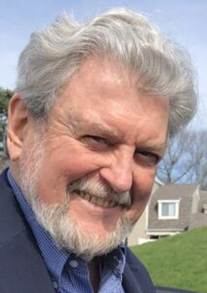
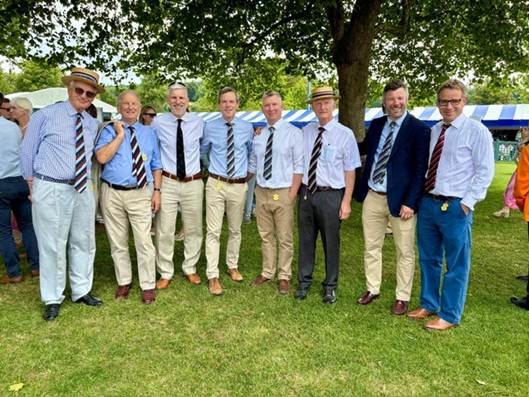
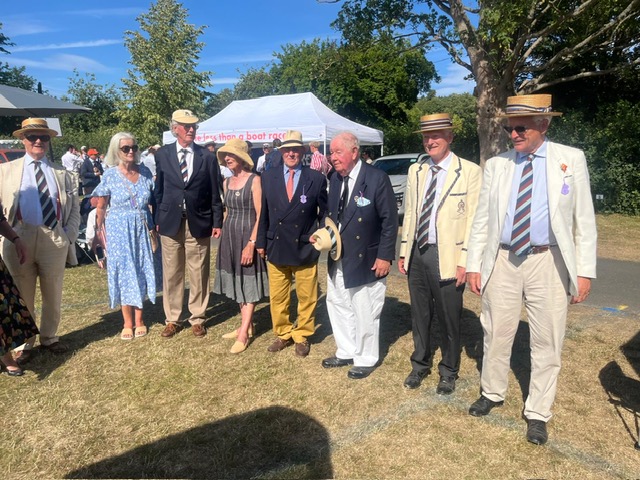
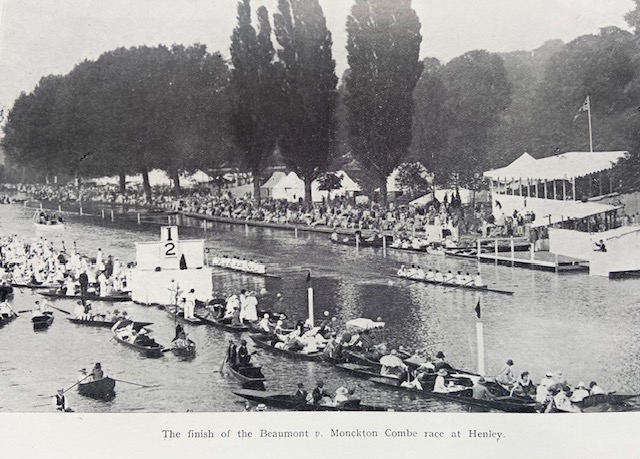
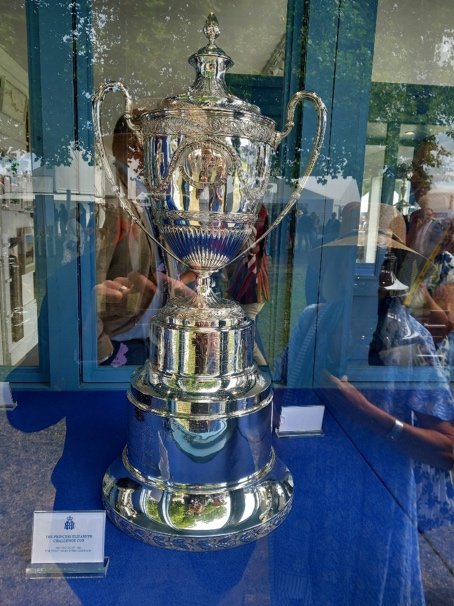
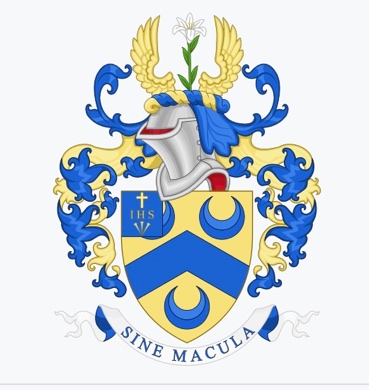
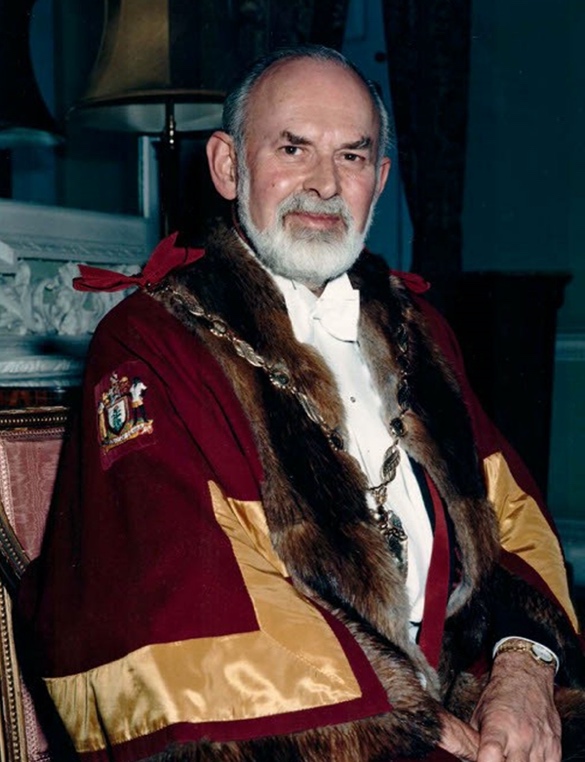
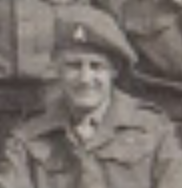
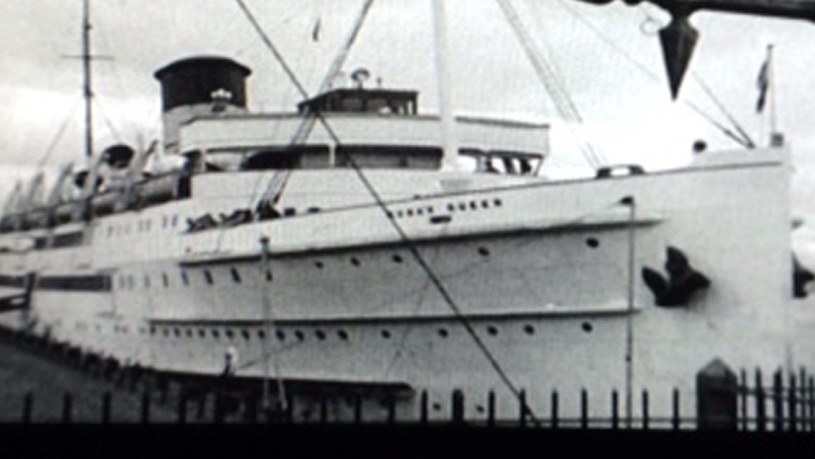
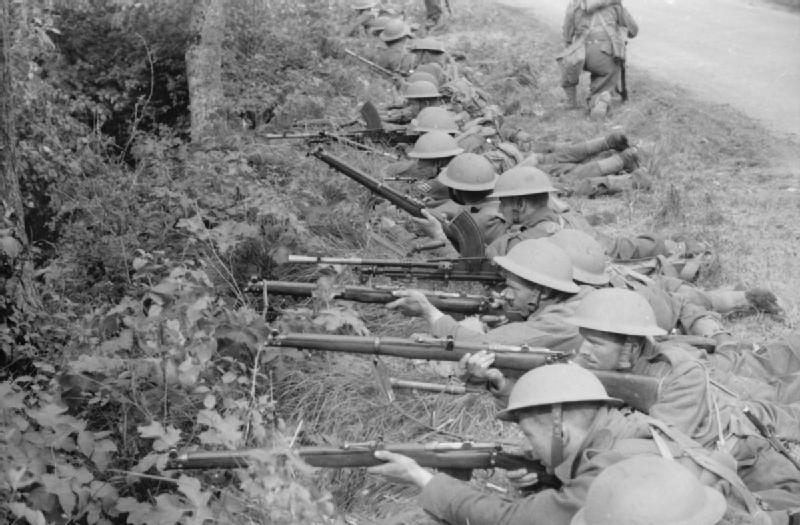
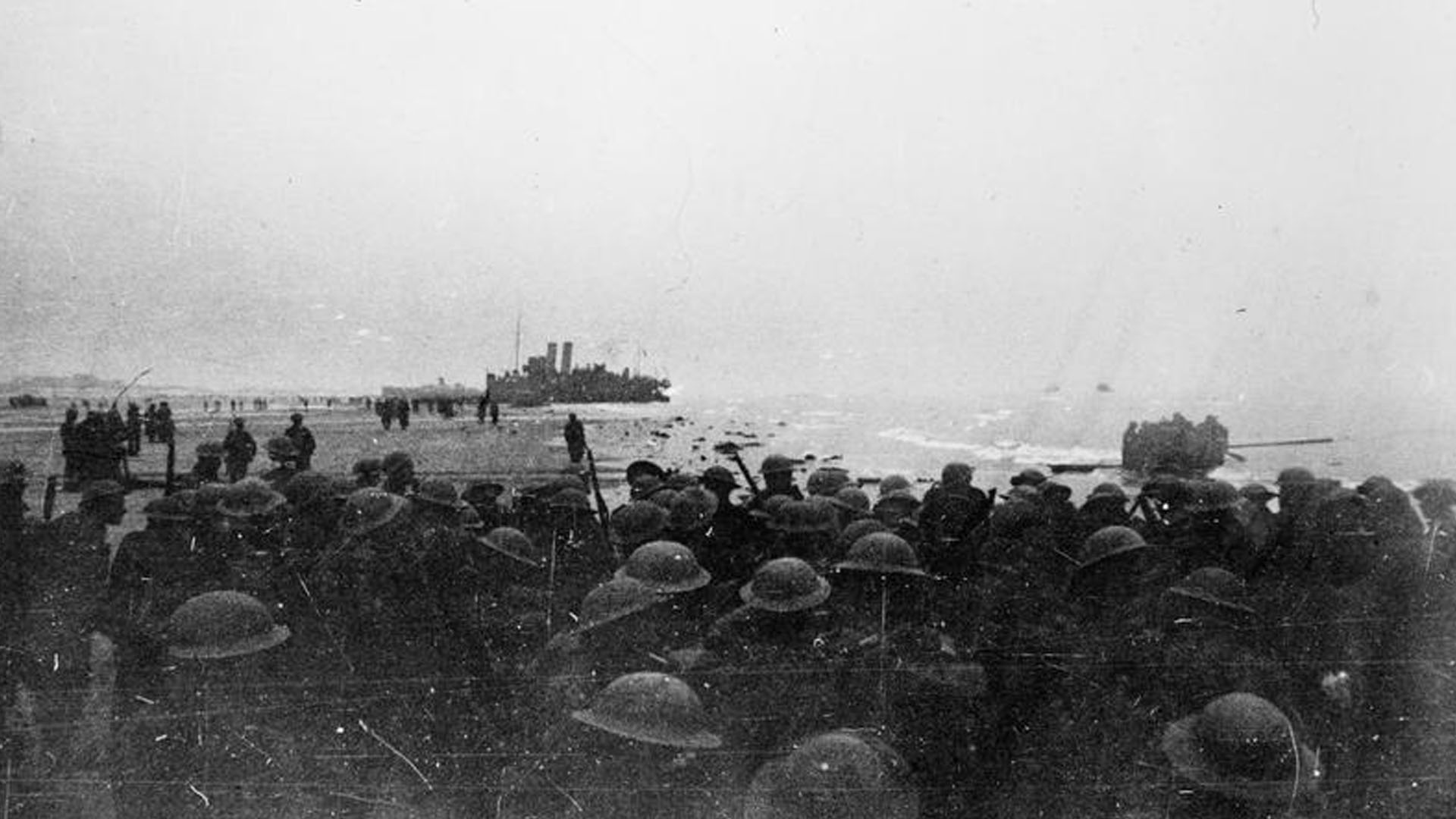
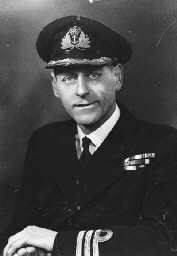
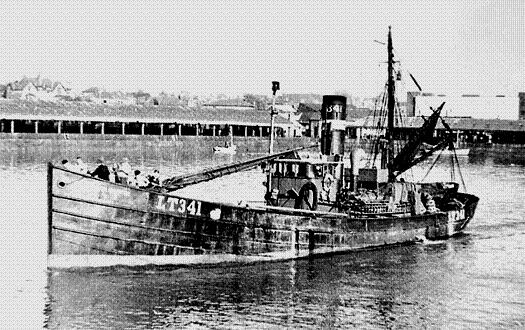
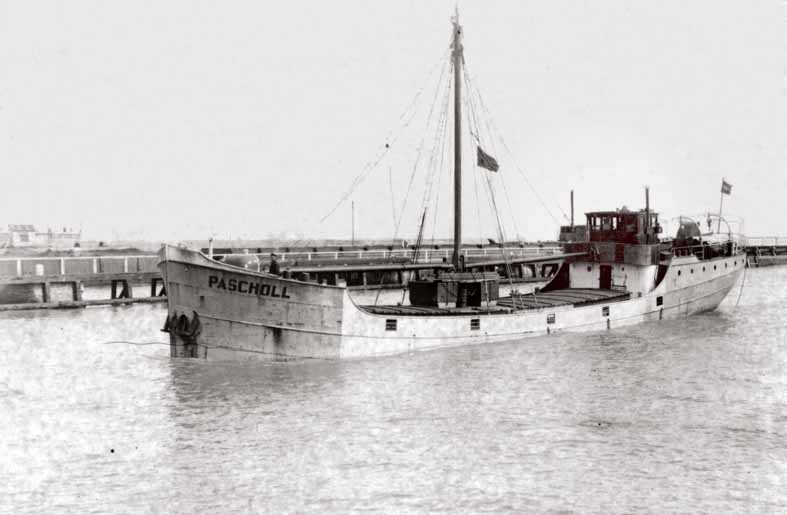
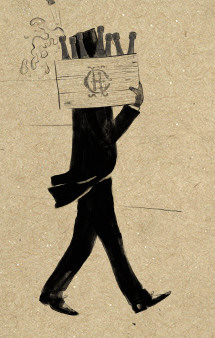
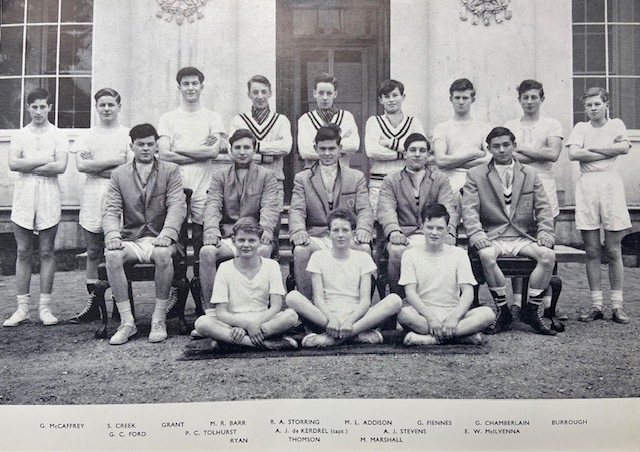
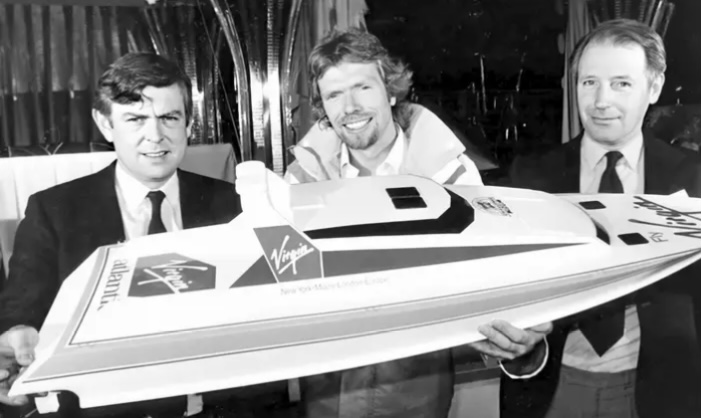
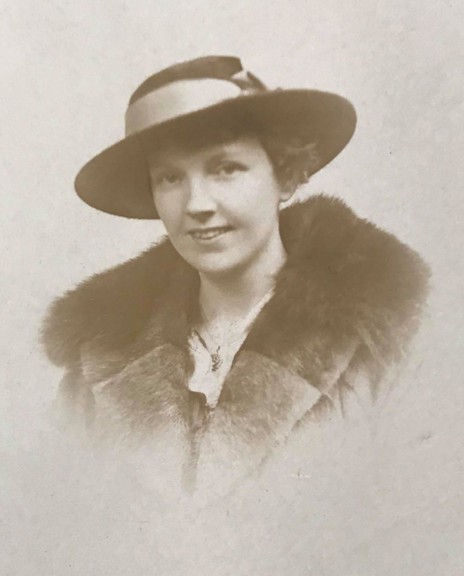
In 1940 and 1941, she served as a liaison between Paris and the
Brittany group (Quimper) and regularly transported military
intelligence and information concerning German troop movements,
distributed the newspaper "Resistance" and made the
necessary arrangements to enable the escape of several RAF airmen and
British army officers on several occasions. She had, as early as the
summer of 1940, placed her property in
Kerambleiz and her apartment in Paris (24,
bd de la Tour-Maubourg), at Boris Vild 's
disposal; and from that time until July 1941, when she was forced to
flee, she assisted Vild and the organization with all the financial
resources at her disposal. She was thus able to get a fairly large
number of British people to leave by providing them with civilian
clothing, food and money to return to England, either by the Spanish
border or by the ports of Brittany.
She was also able to collect and give Vild a lot of information about
the Germans, as well as maps of Lorient and other places.
She also gave shelter to Intelligence Service agents with their
transmitters, as well as to a Polish aviator, who had escaped from the
prison hospital in Quimper, whom she managed to get to leave for
England with her son Michael in July 1941. 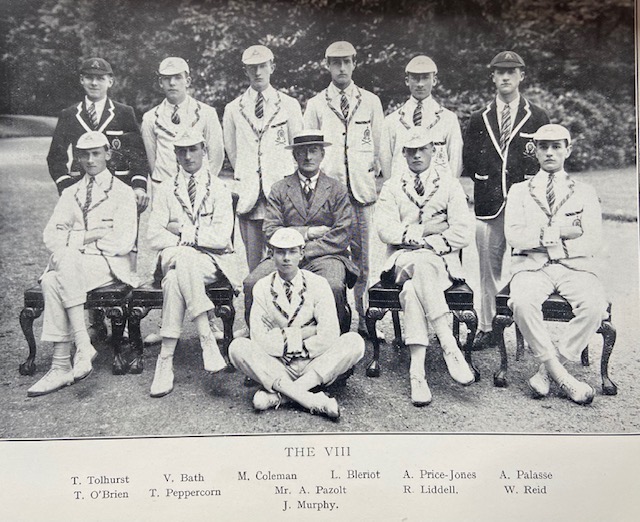
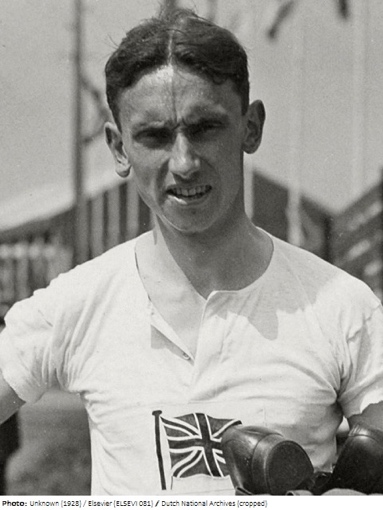
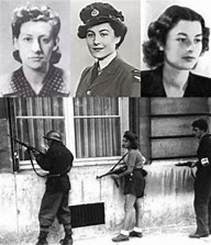
A Short History of Campion Hall
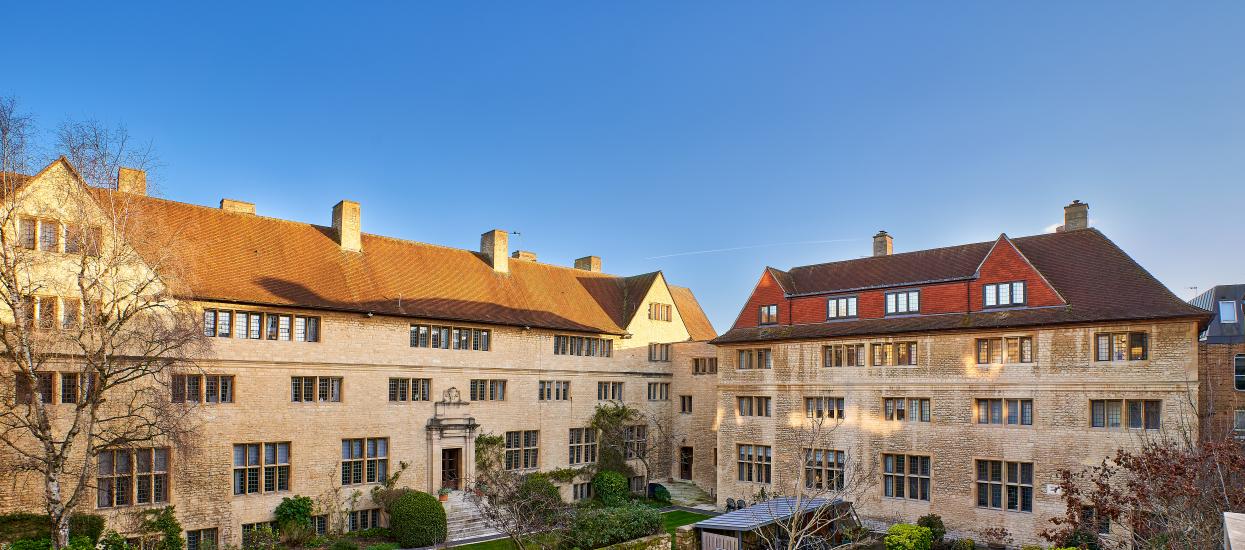
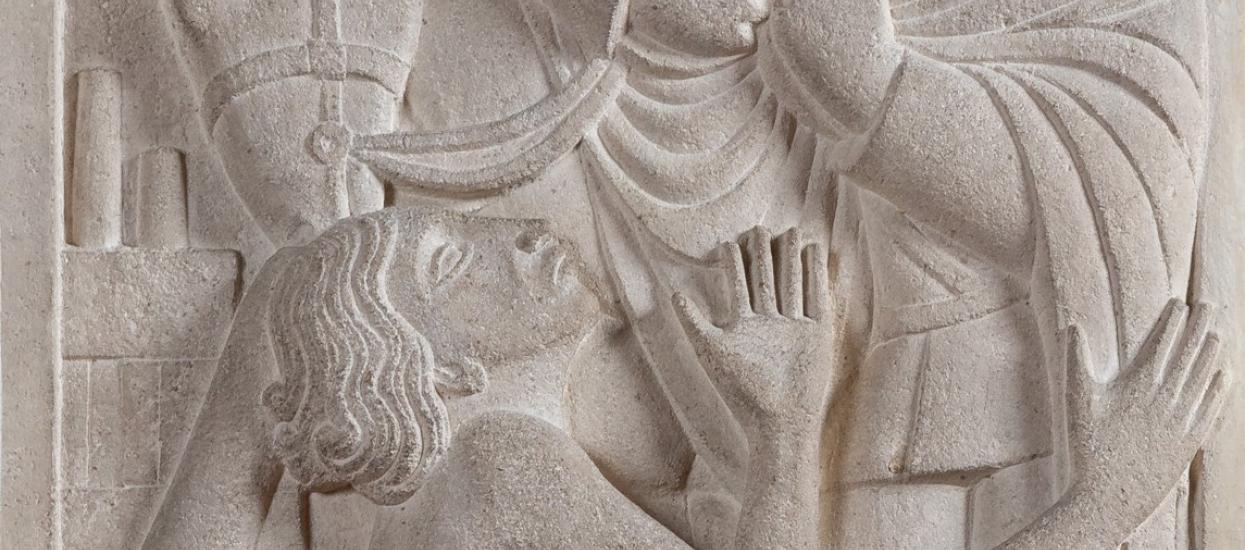
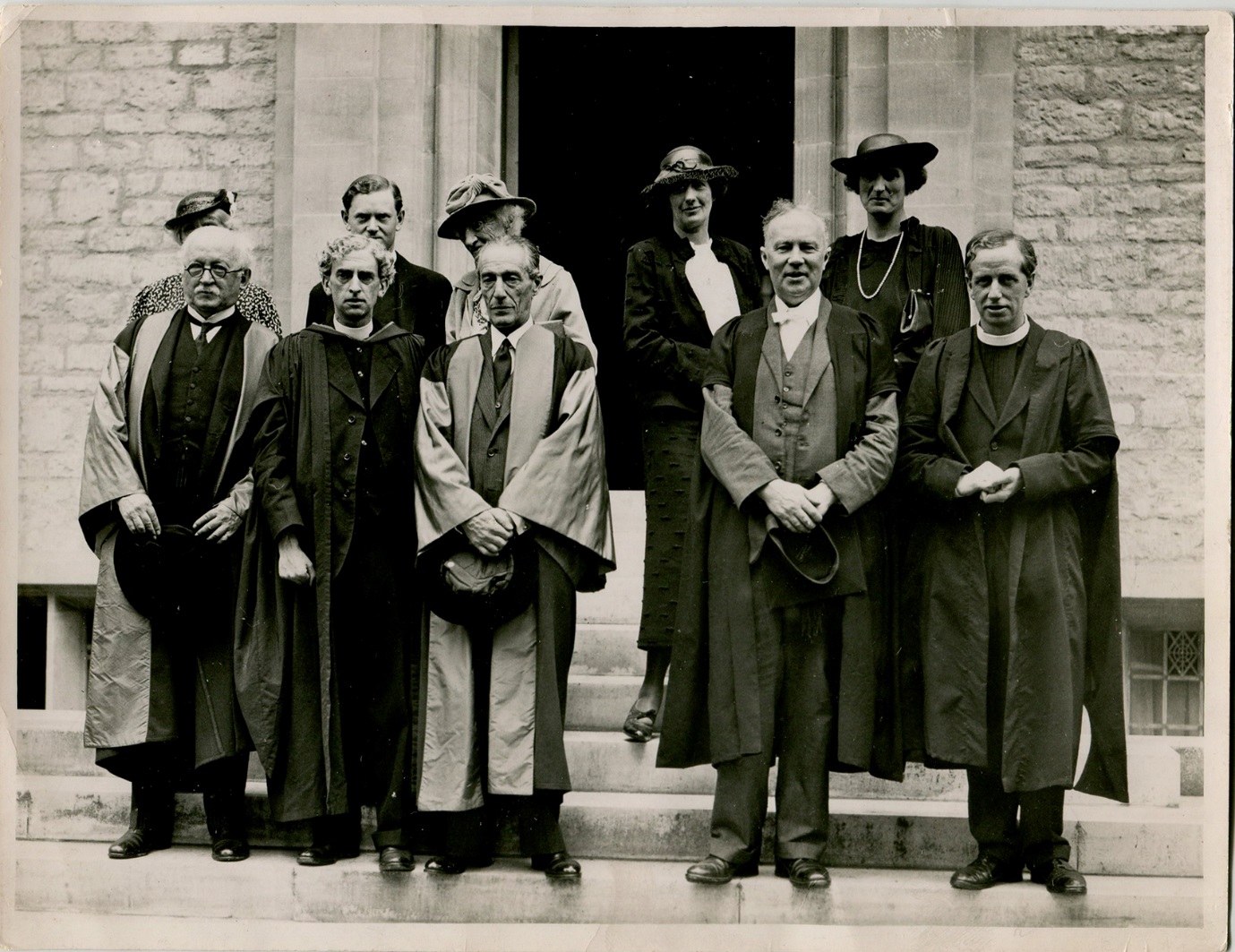
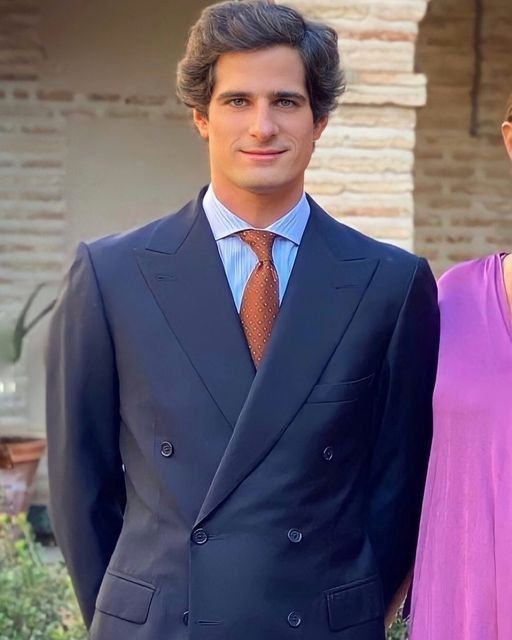
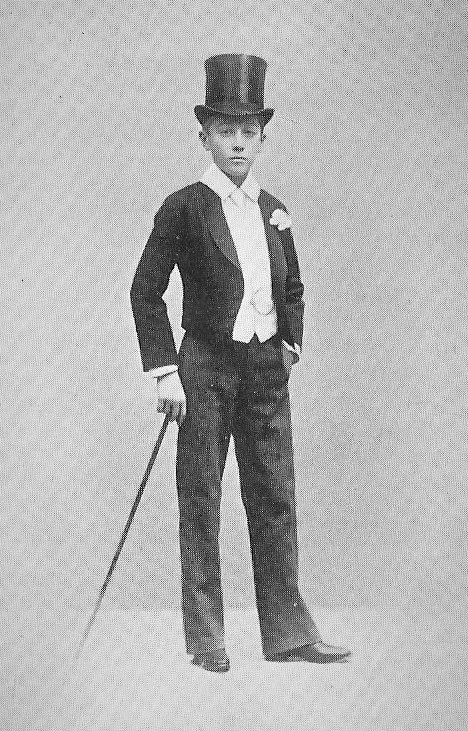
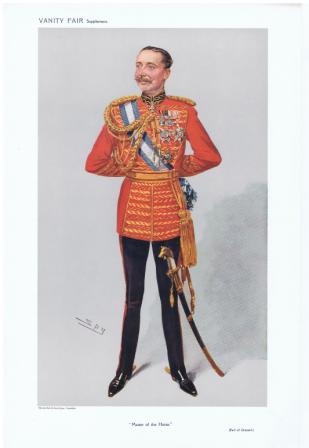
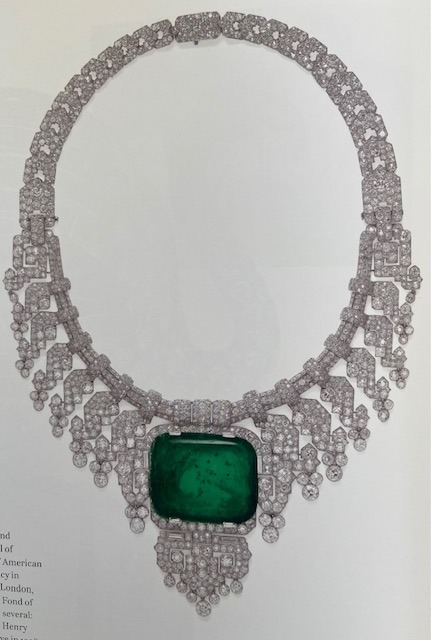
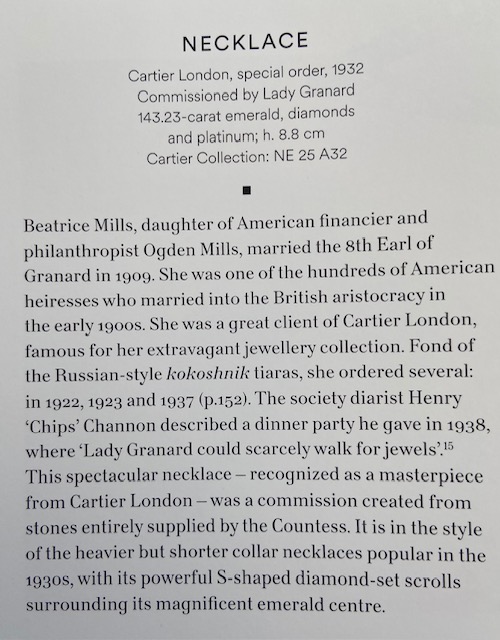
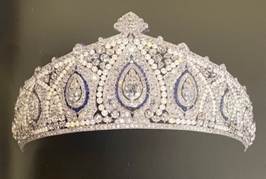
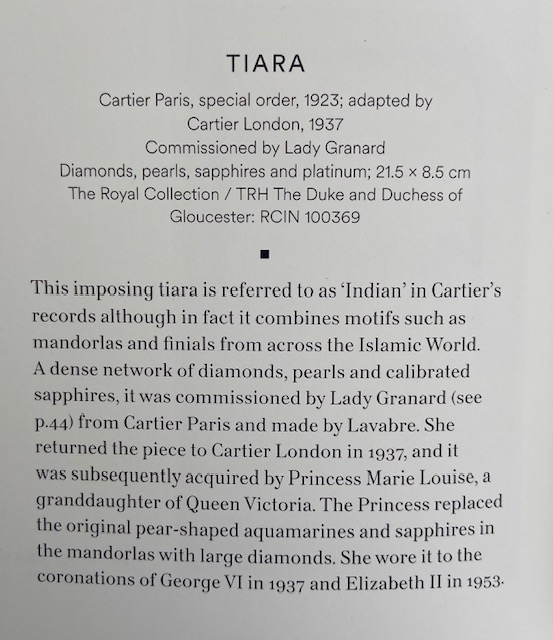
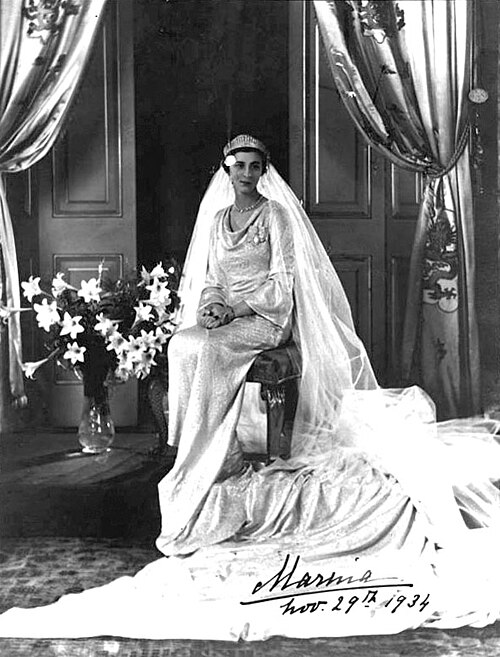
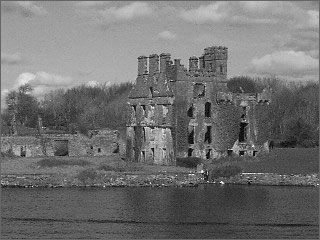
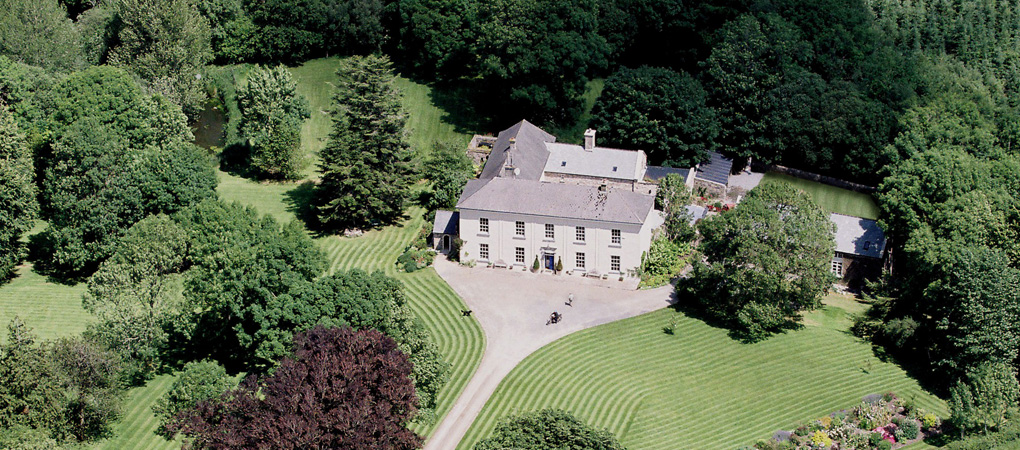

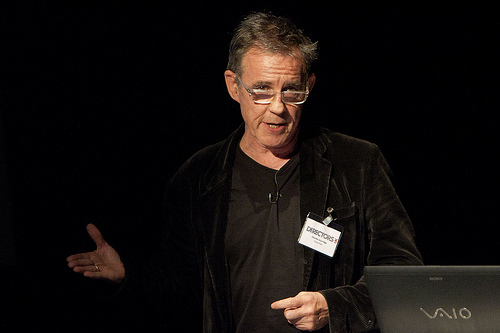
Paul Raymond-Barker BEM
wins Sylva Trophy
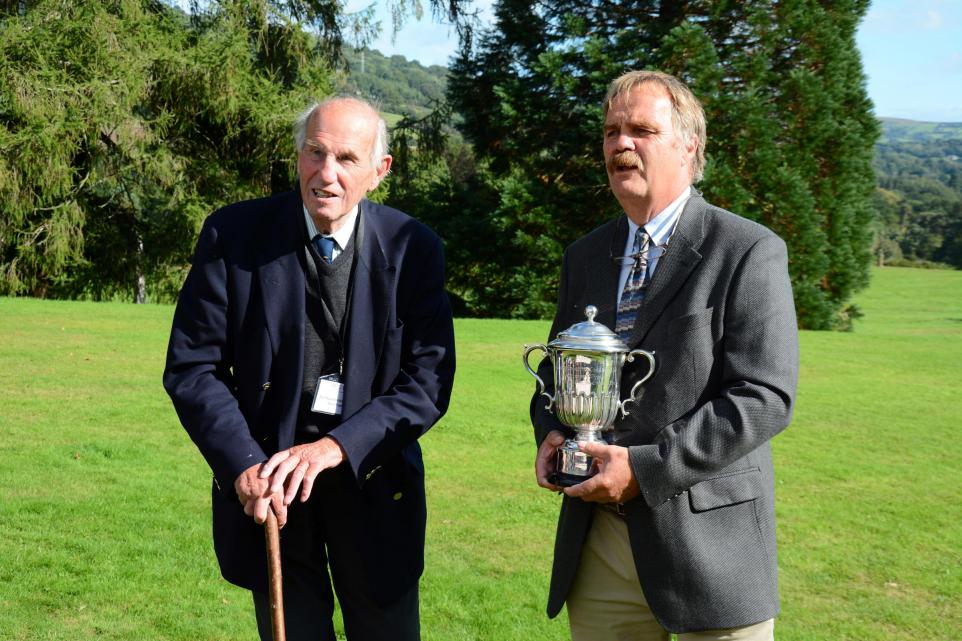
In 2016 he was awarded the British Empire Medal (BEM) in recognition
of his impact on forestry and silviculture in Wales.
